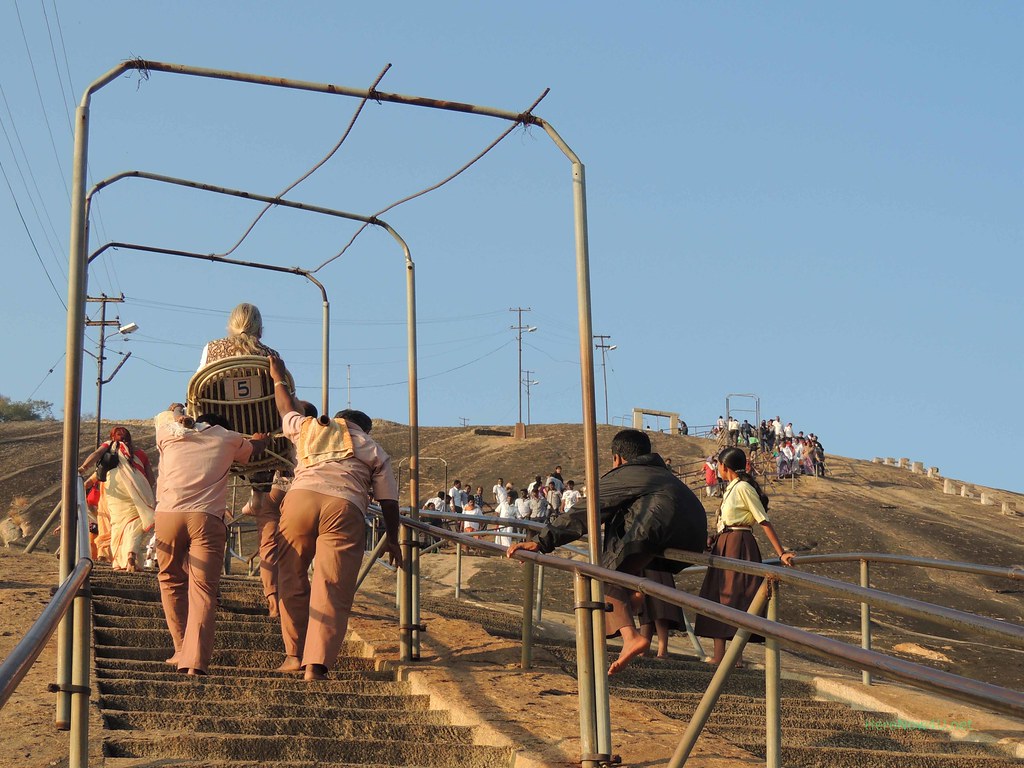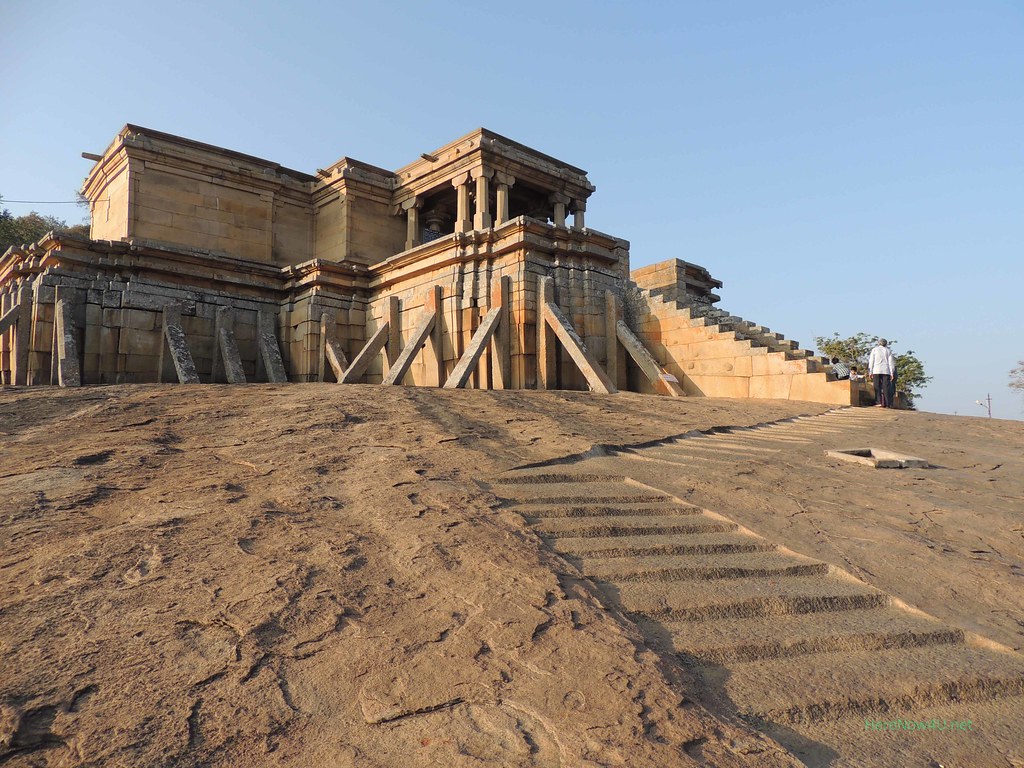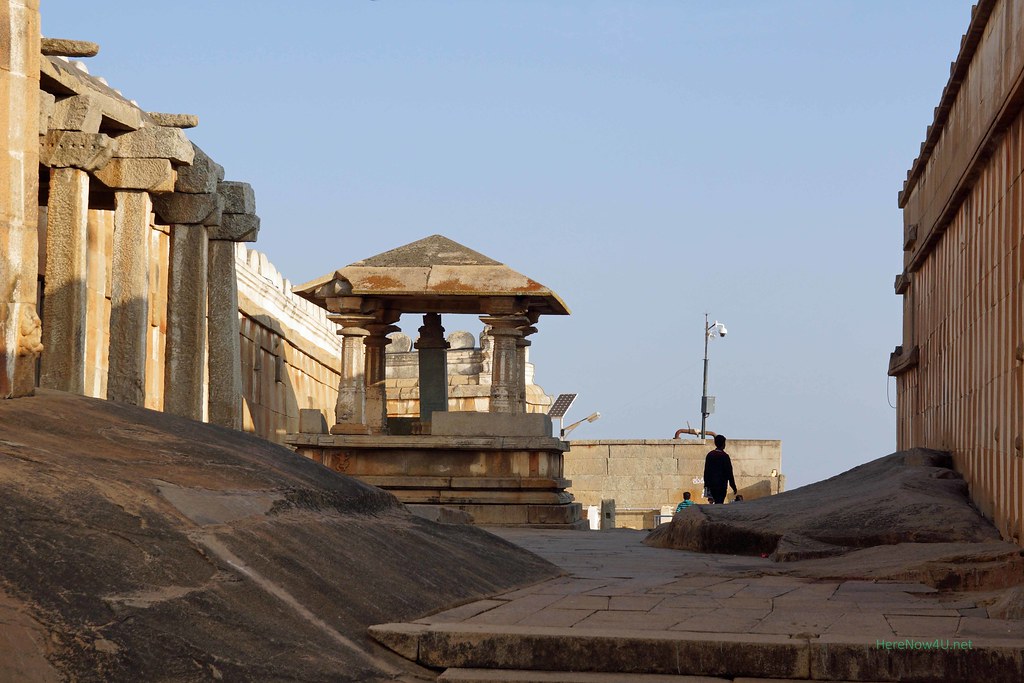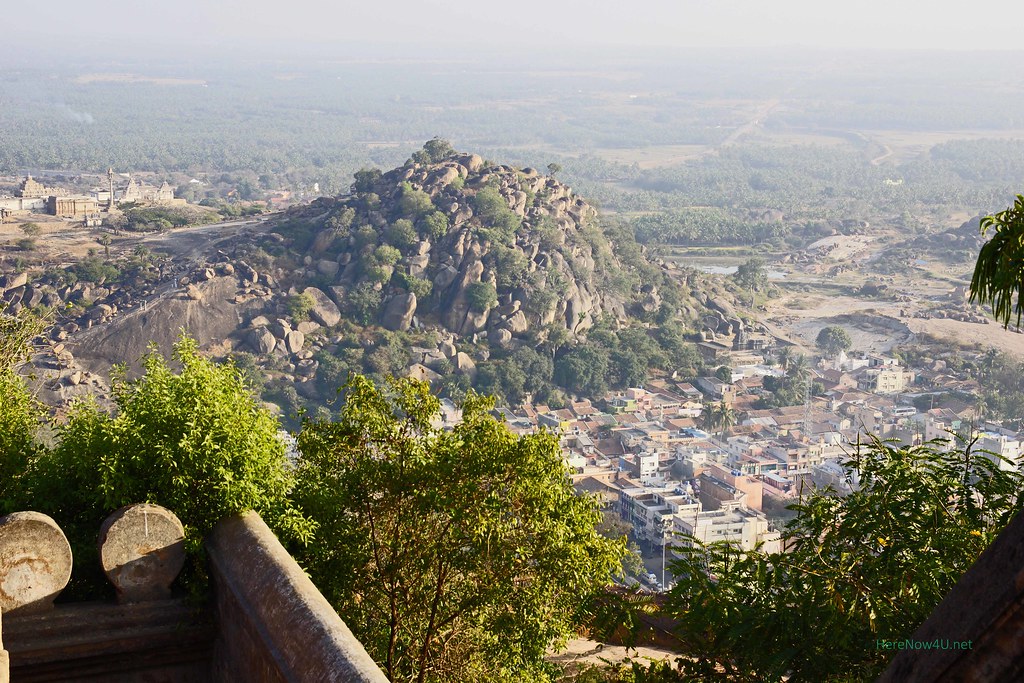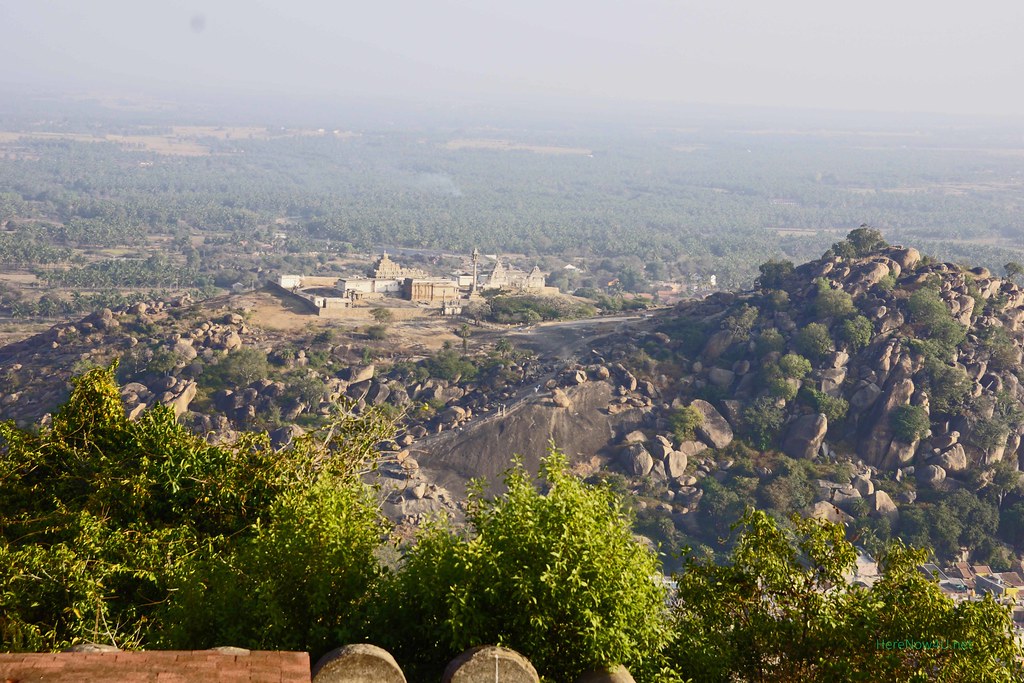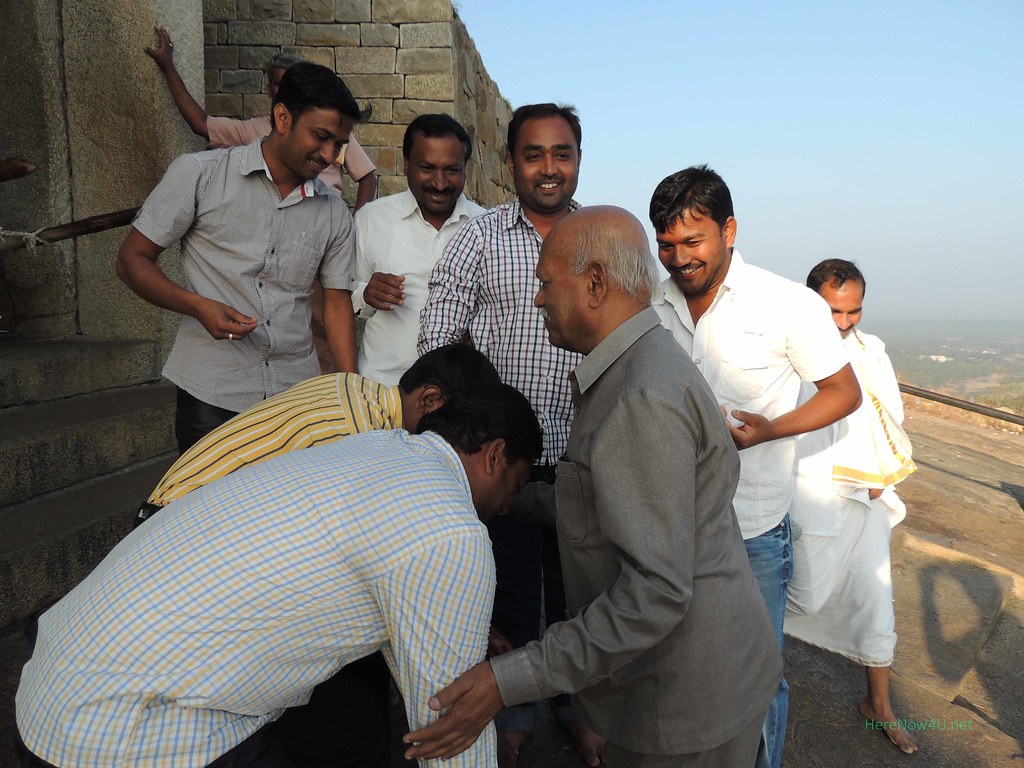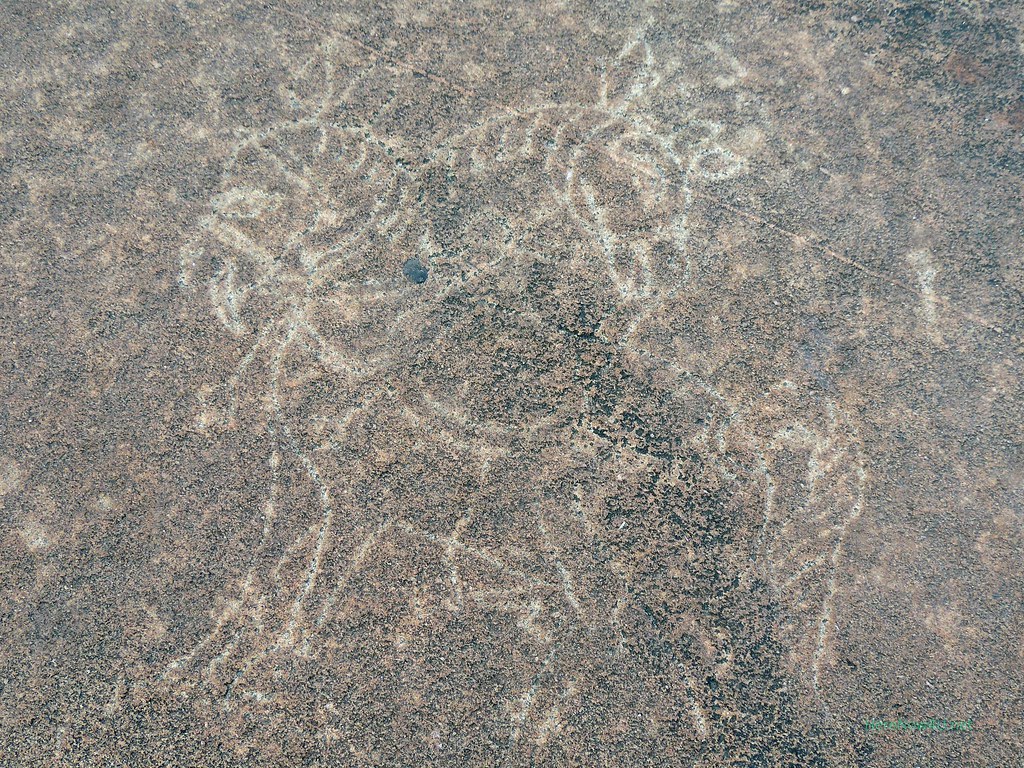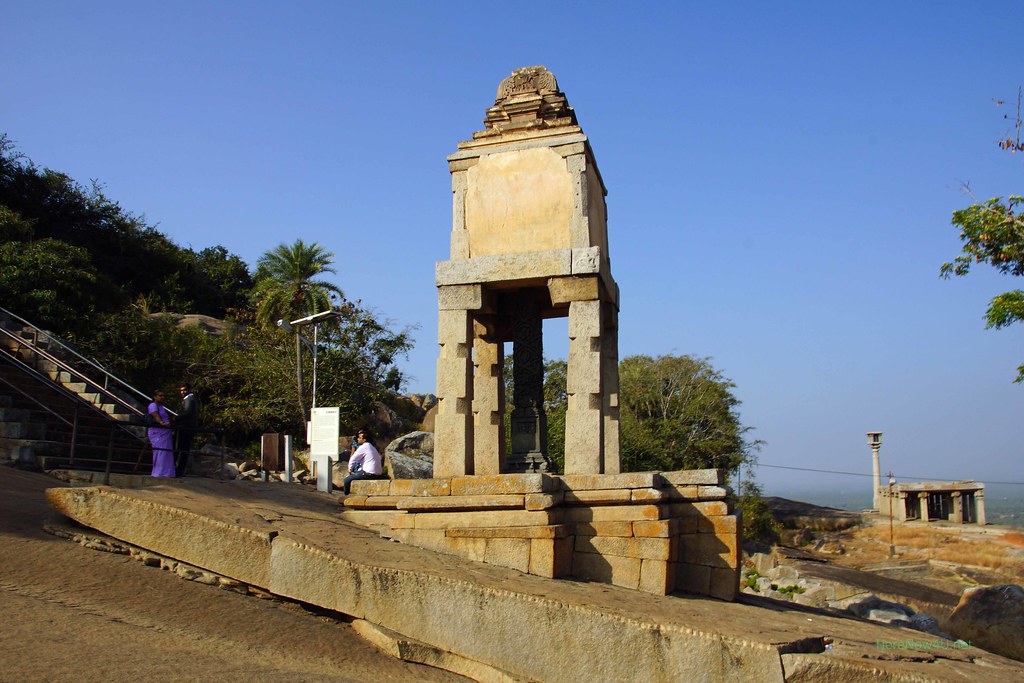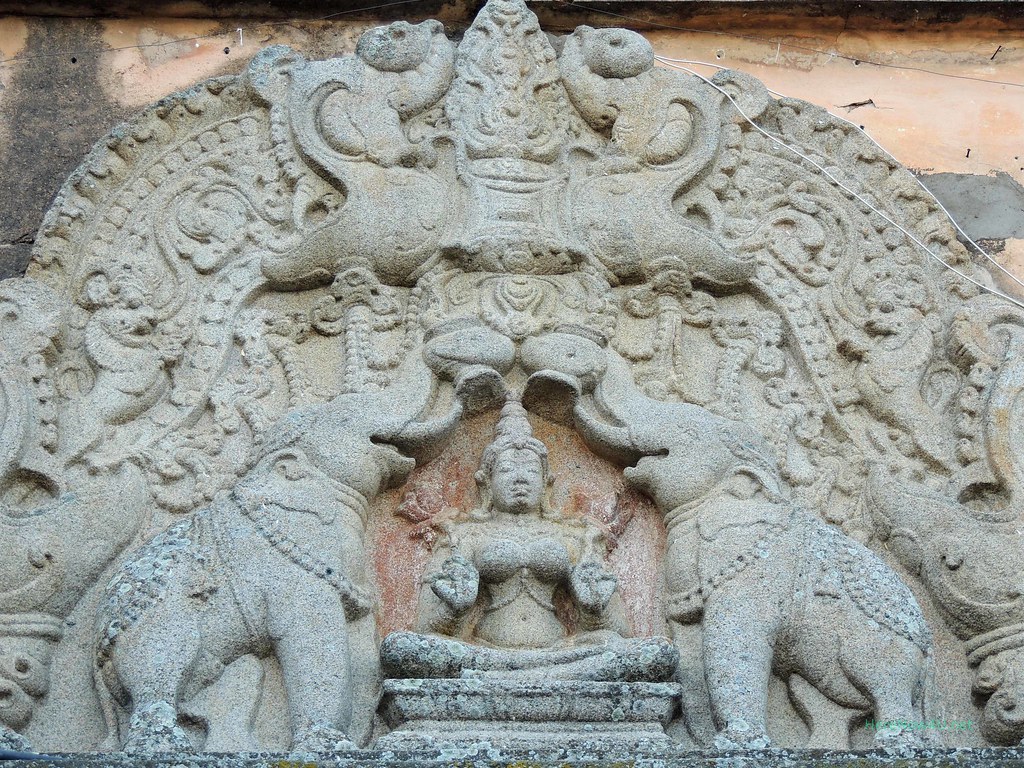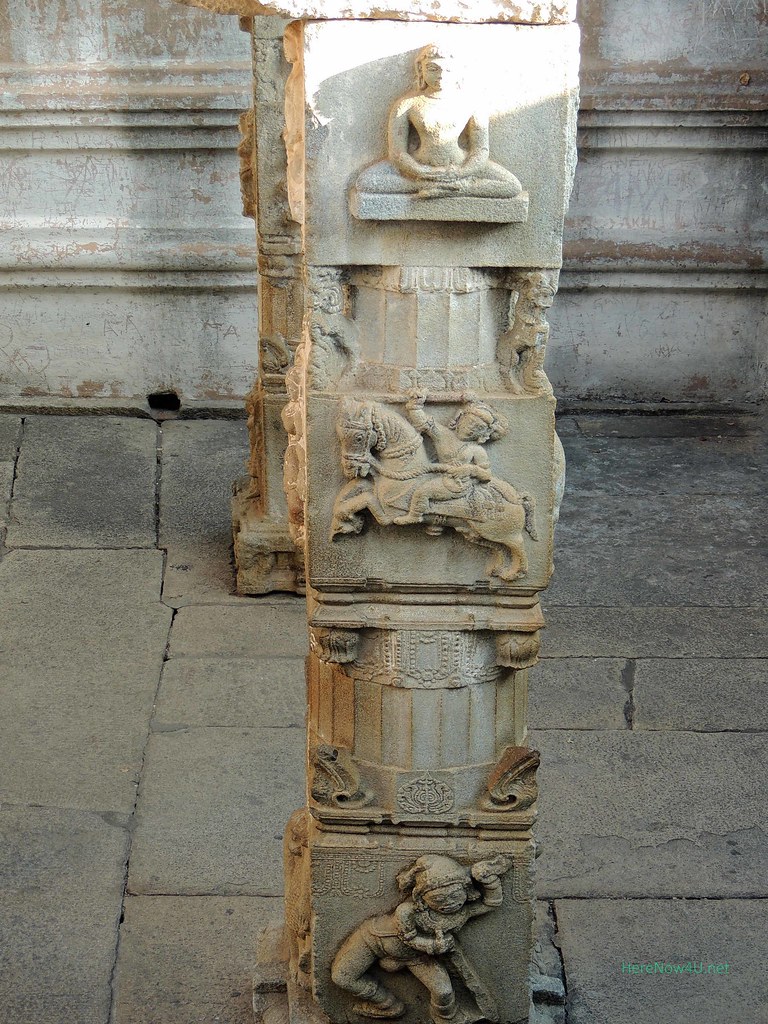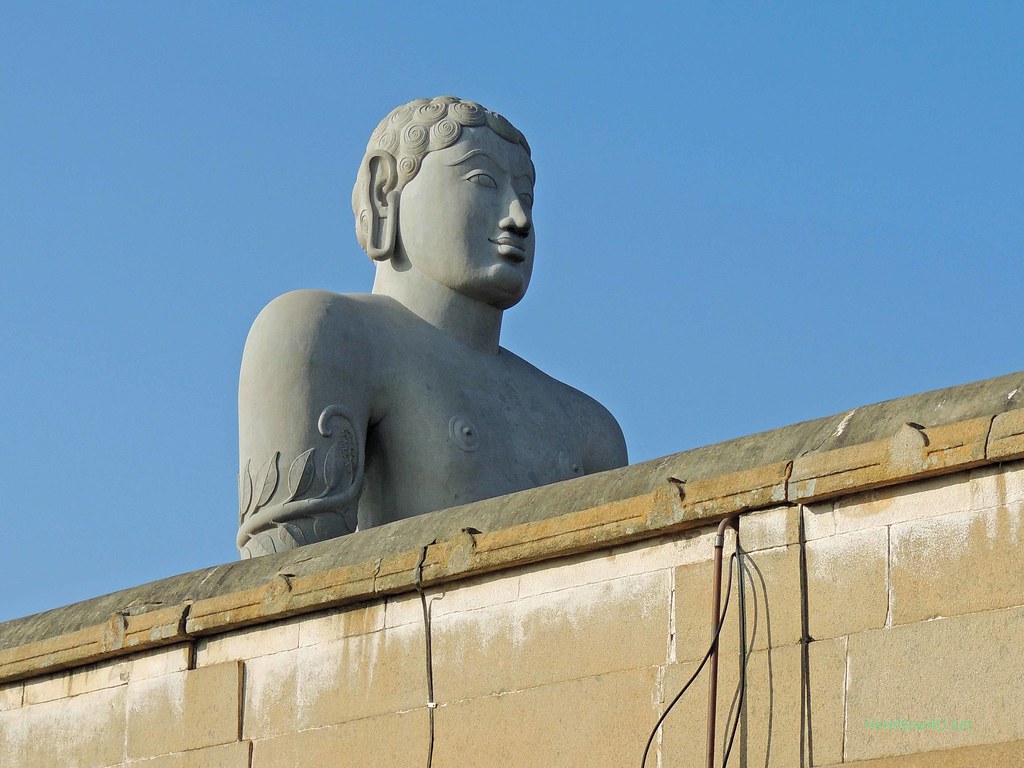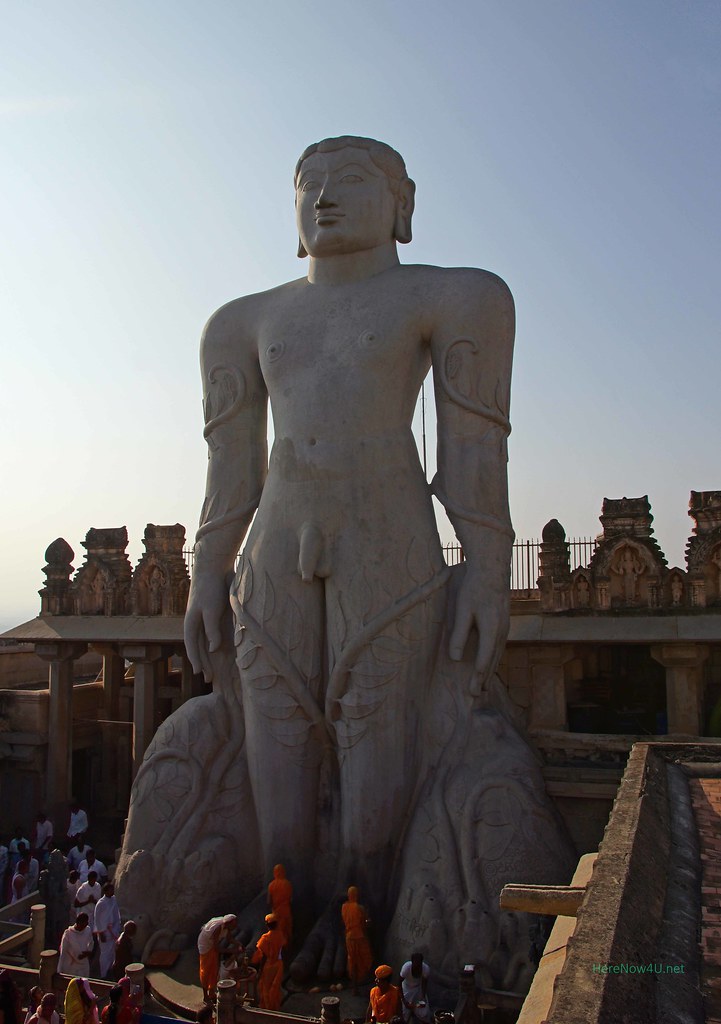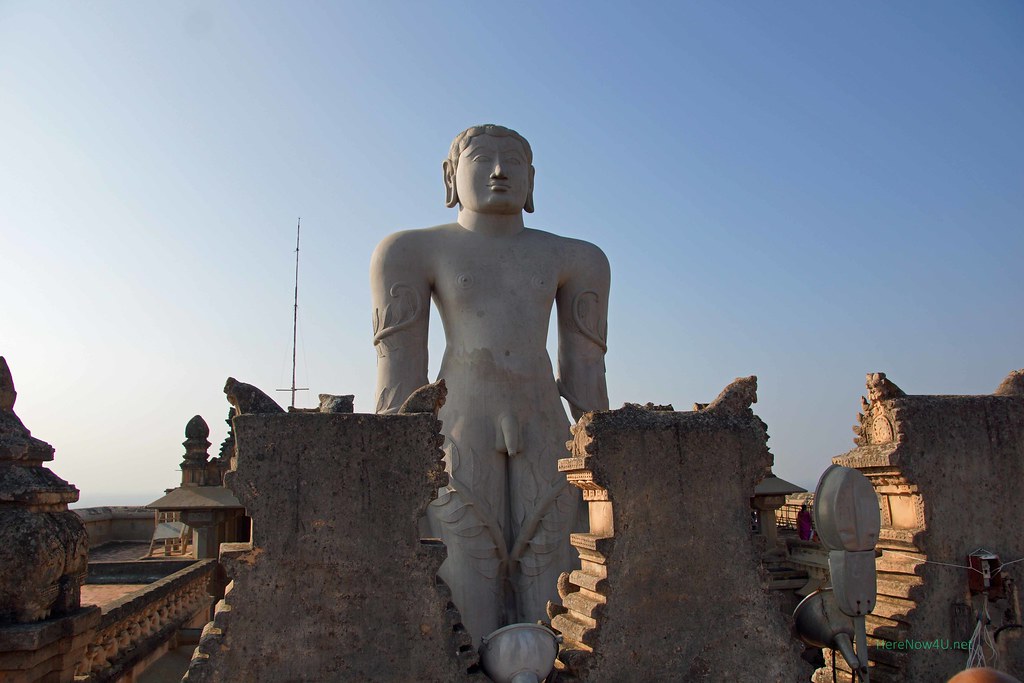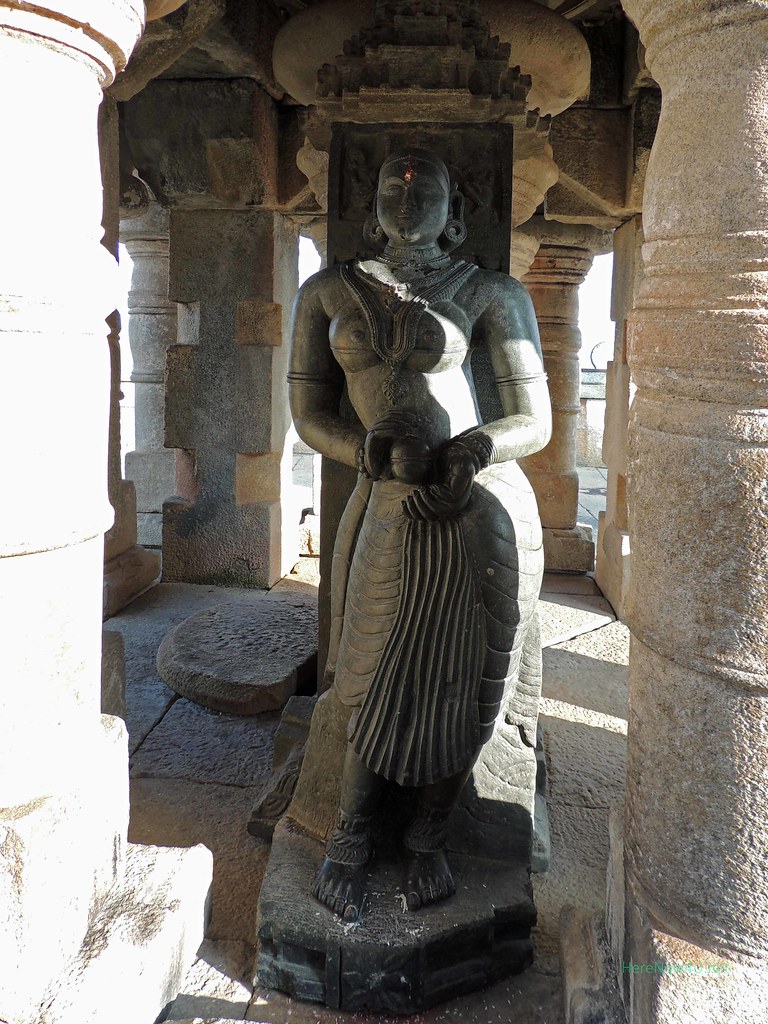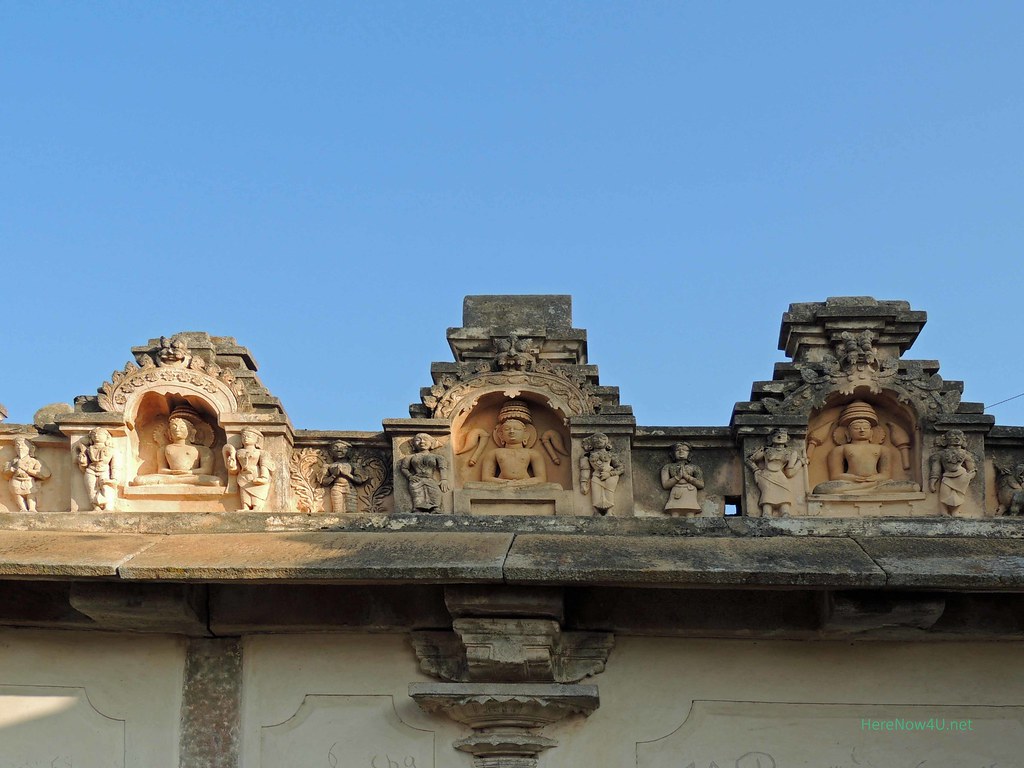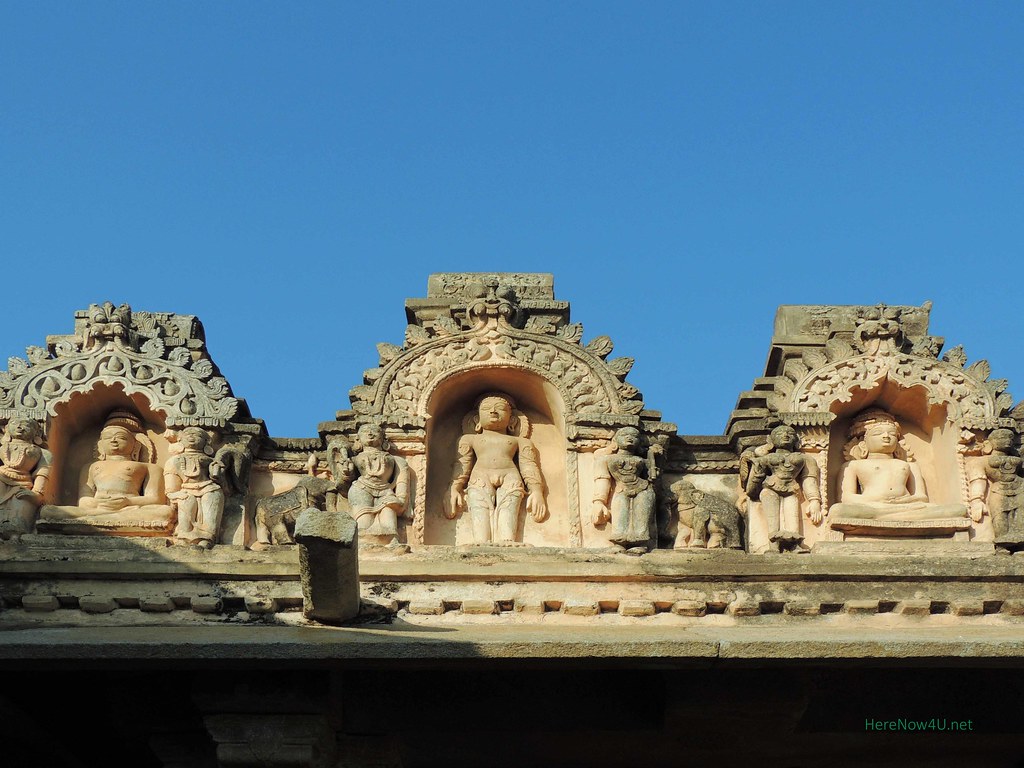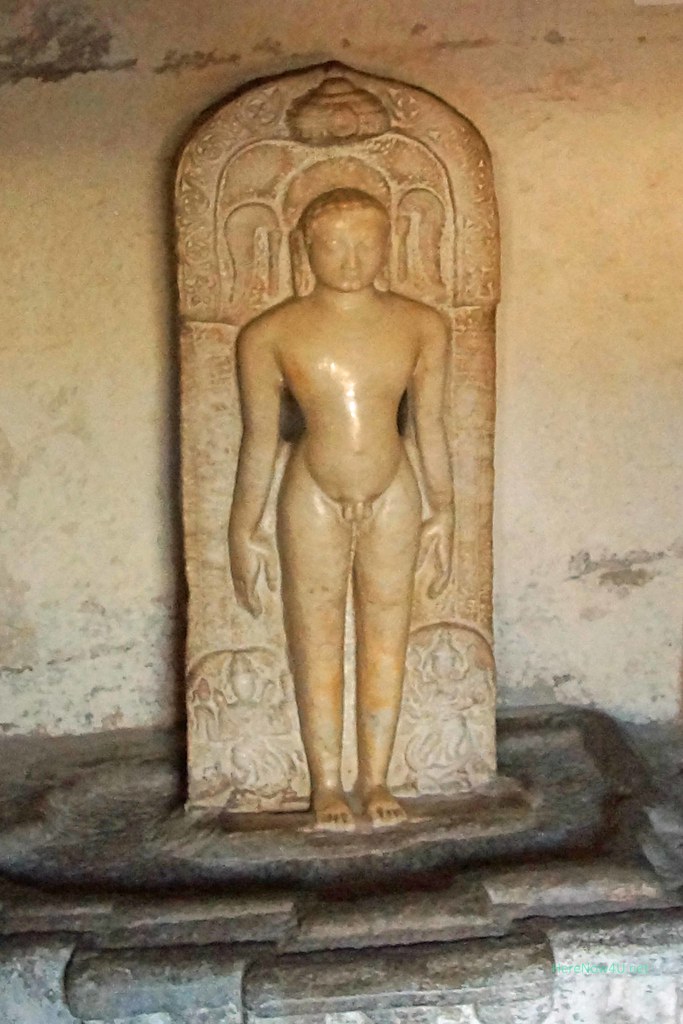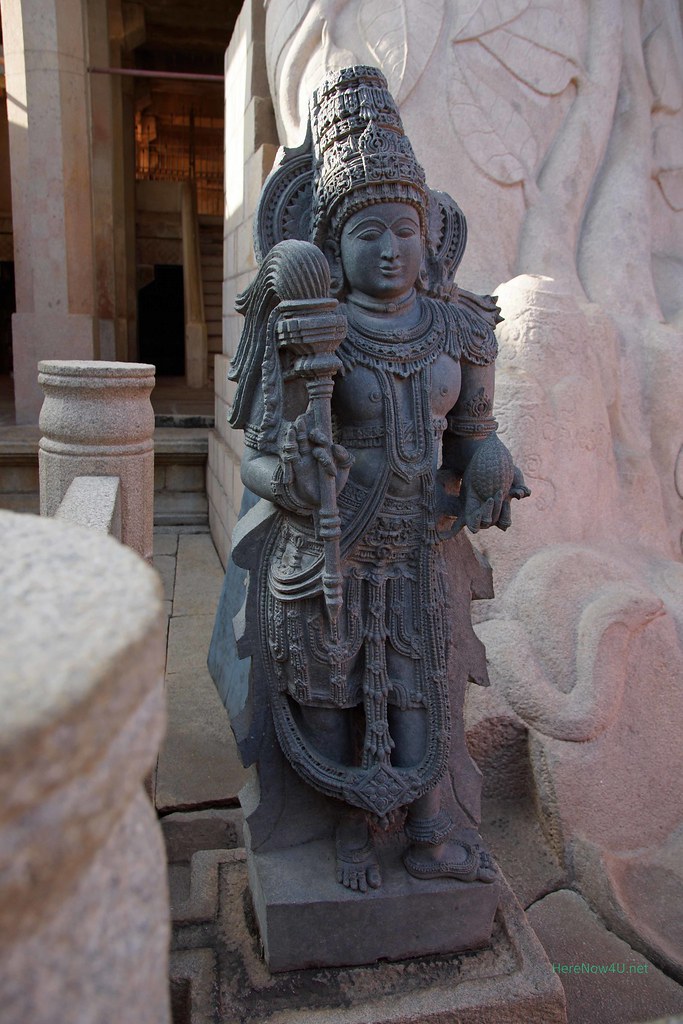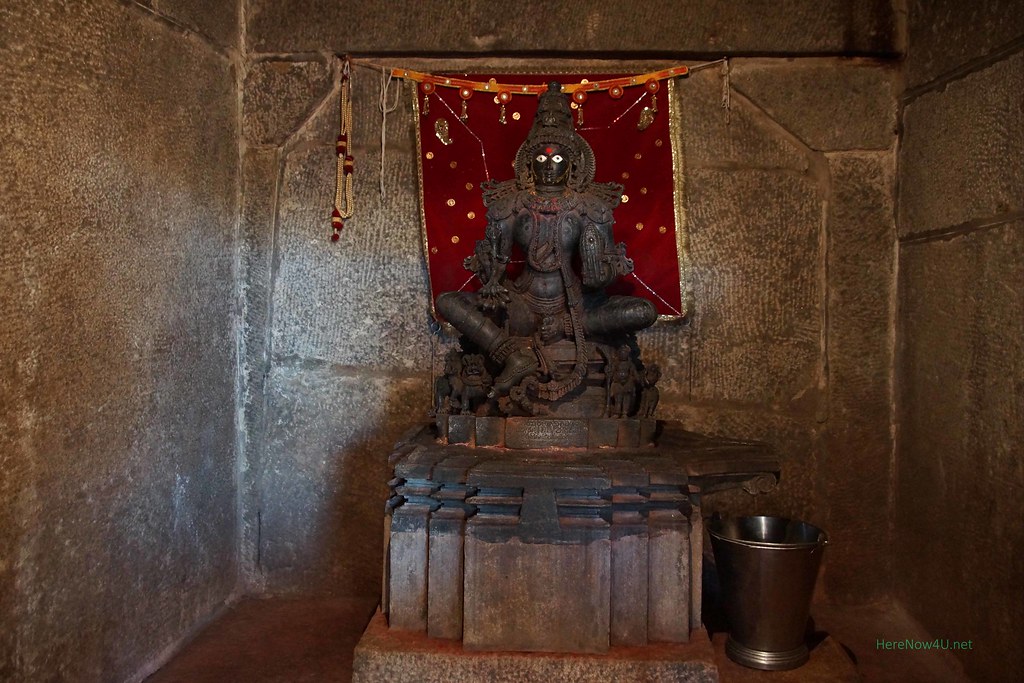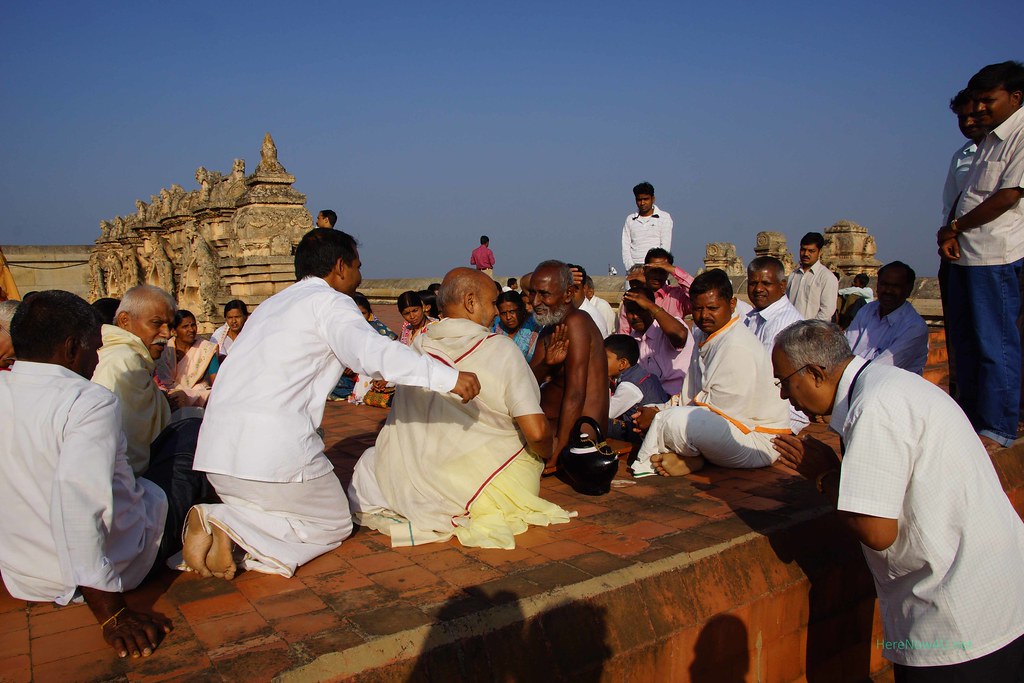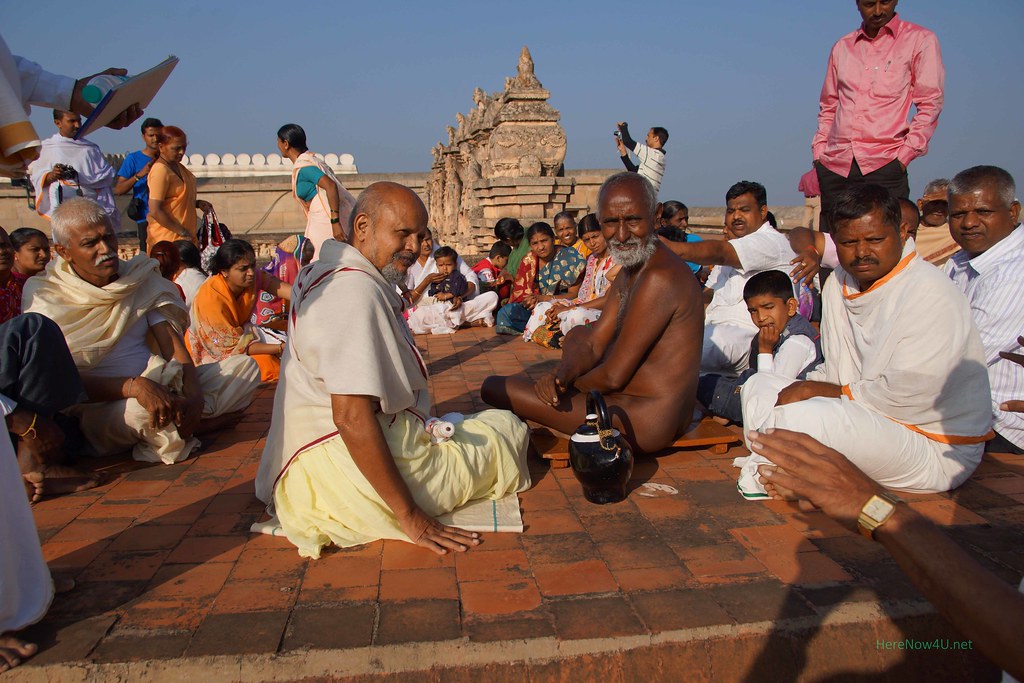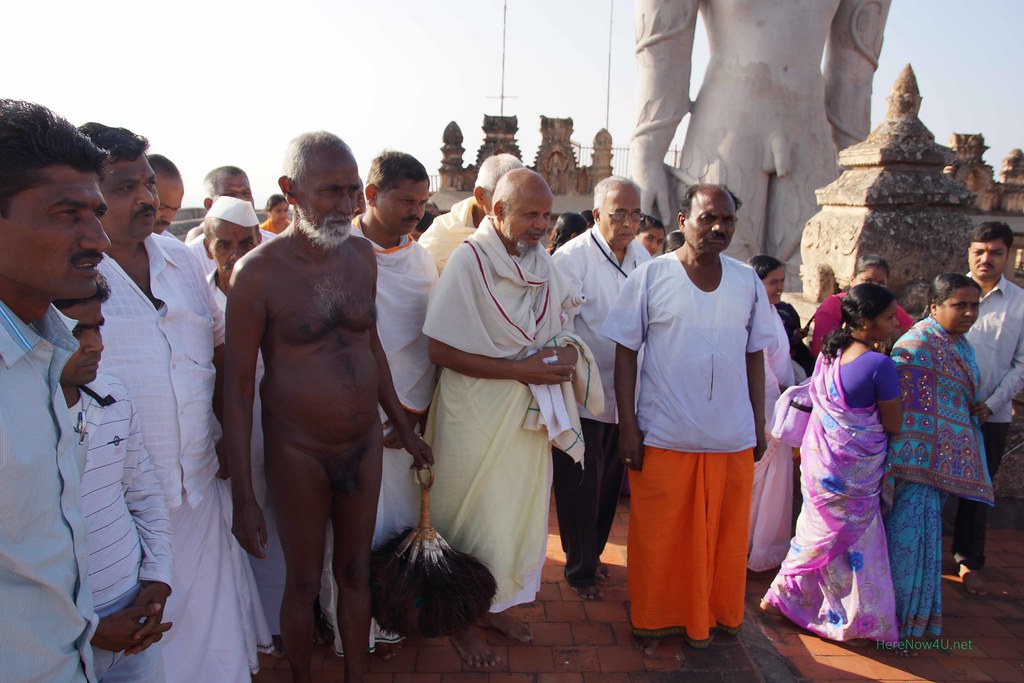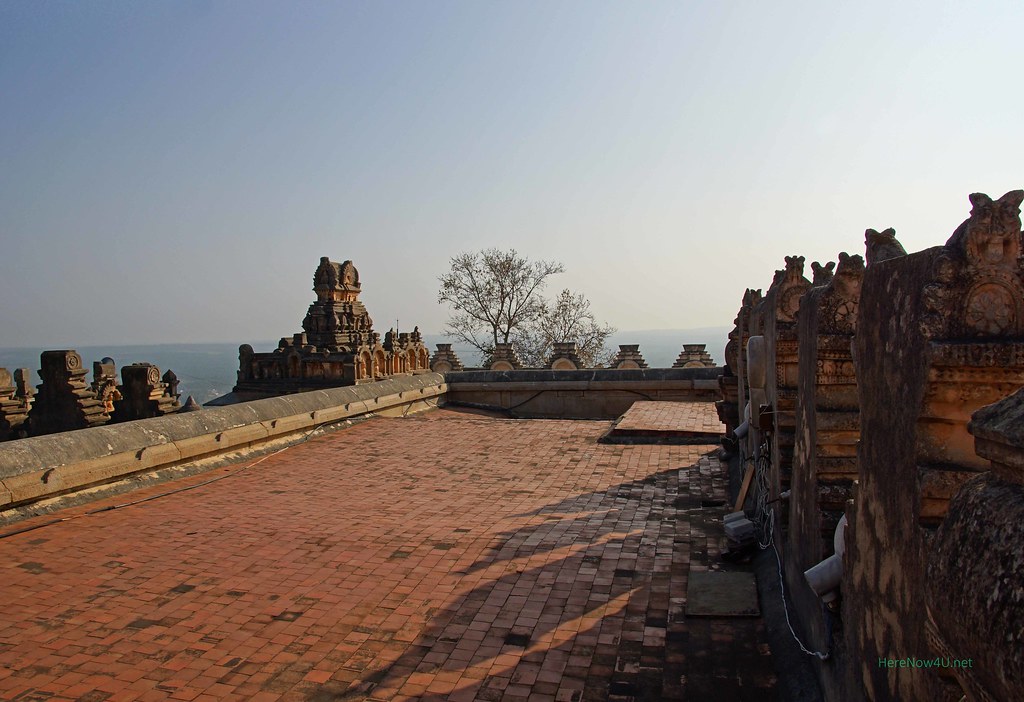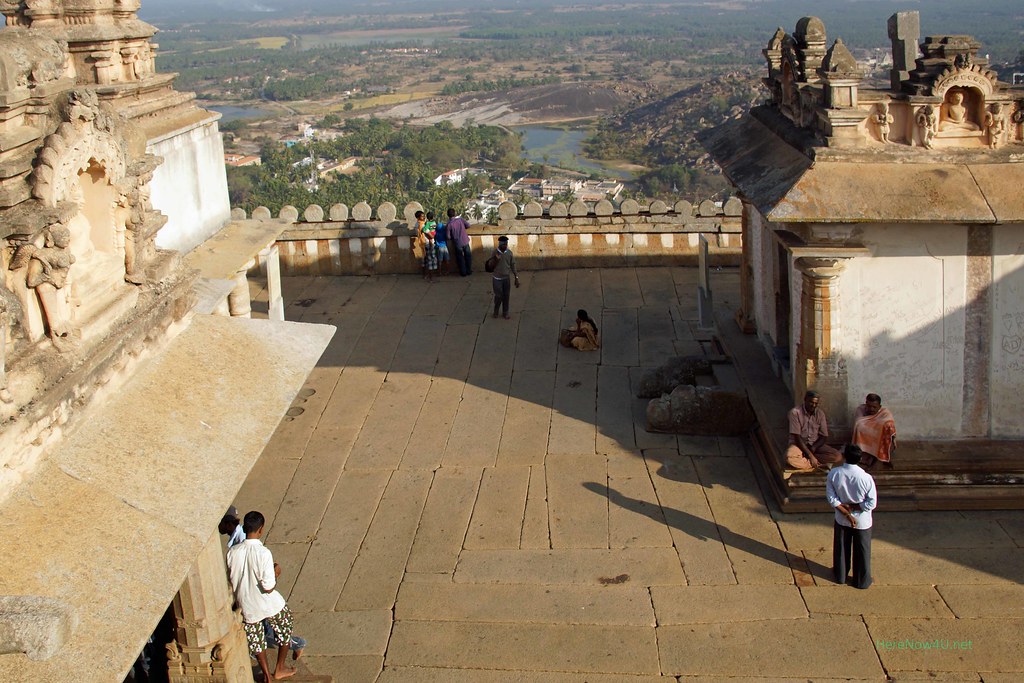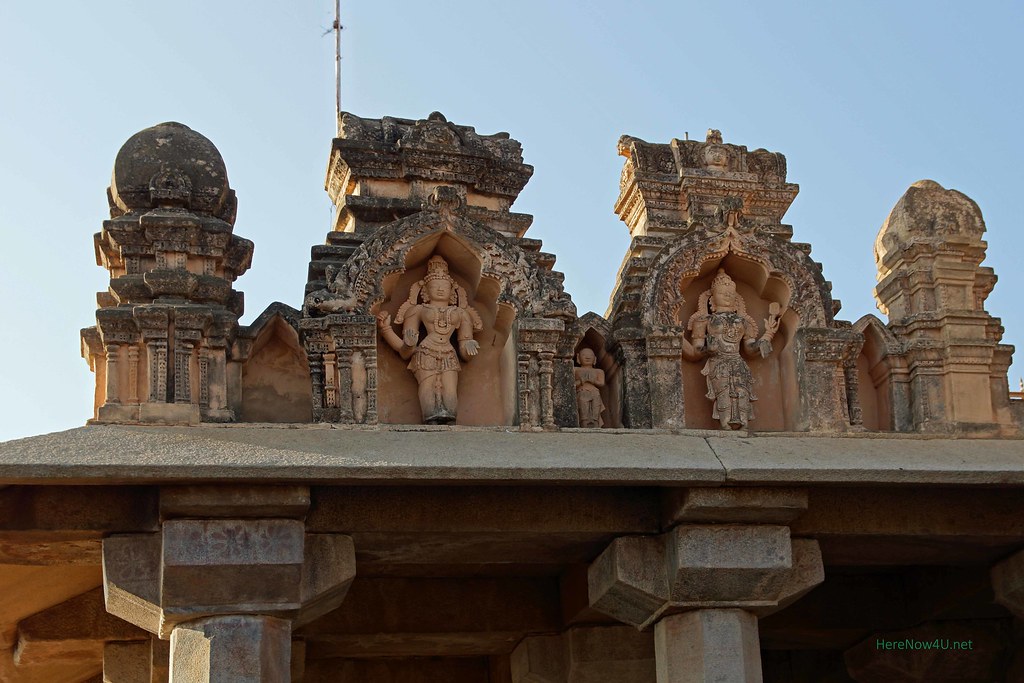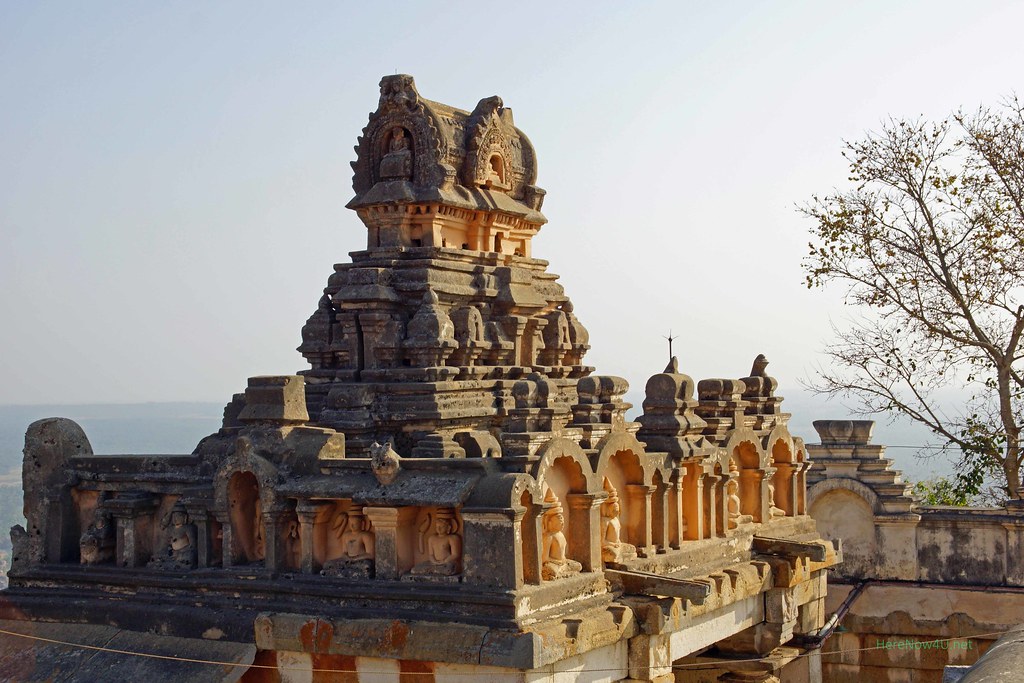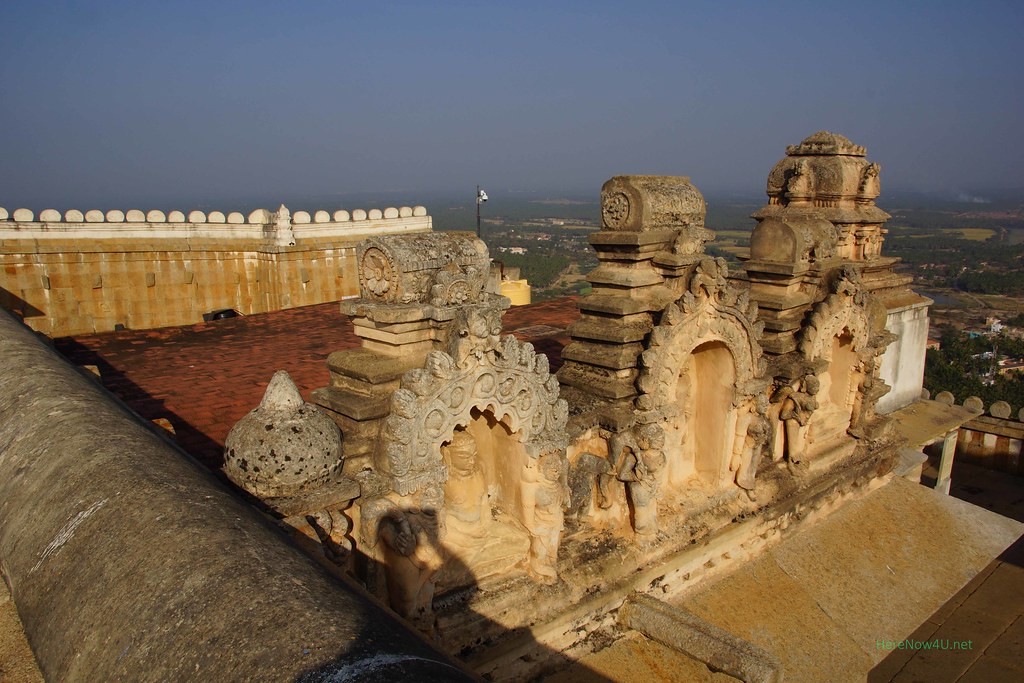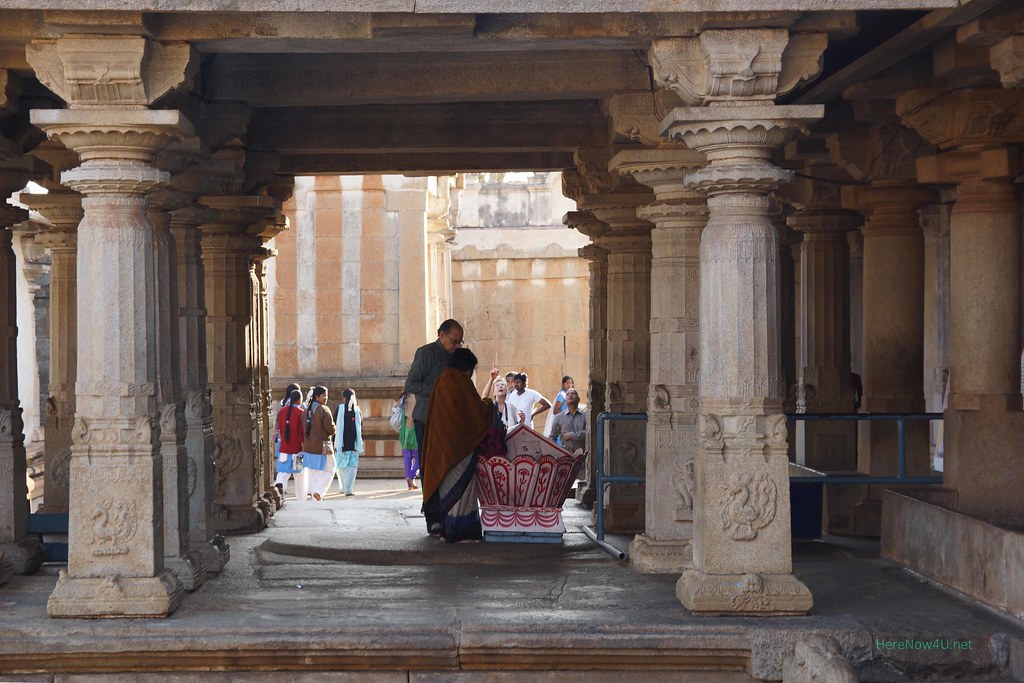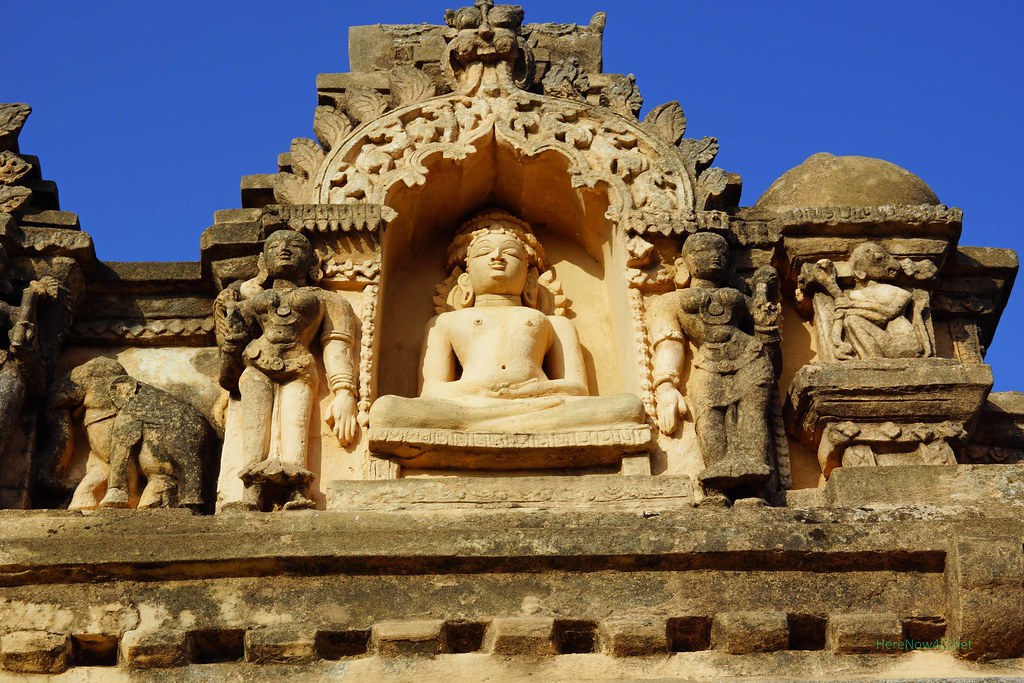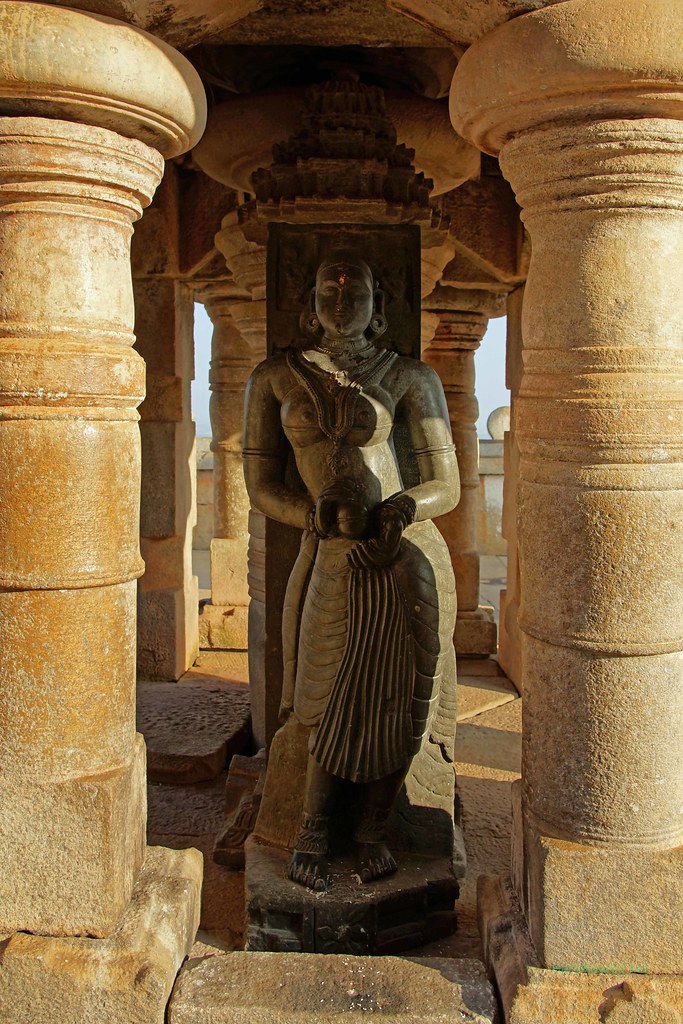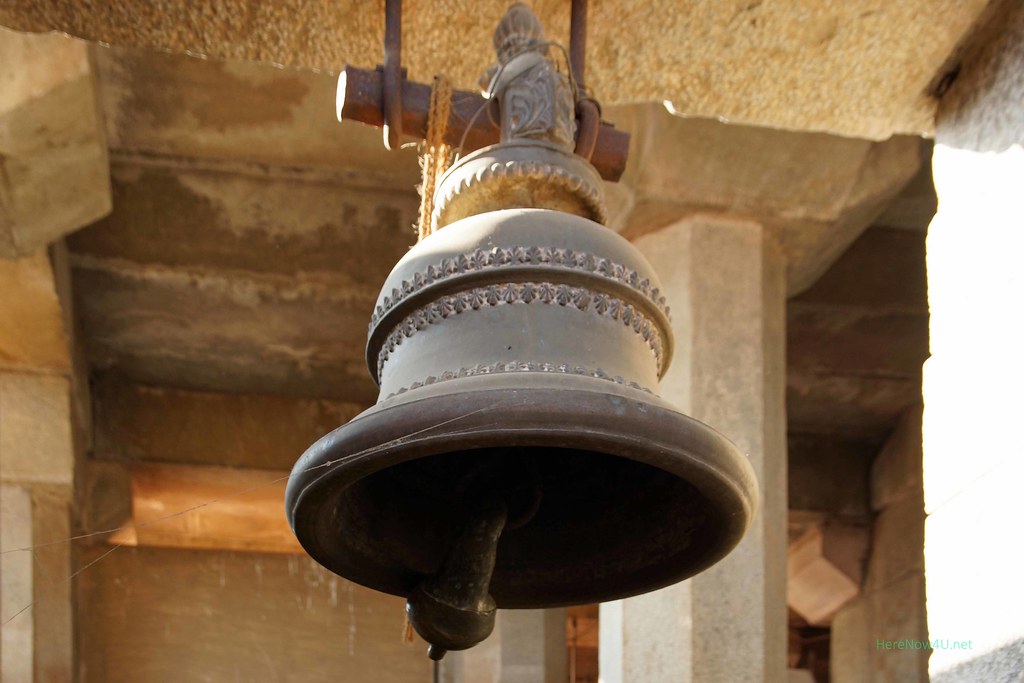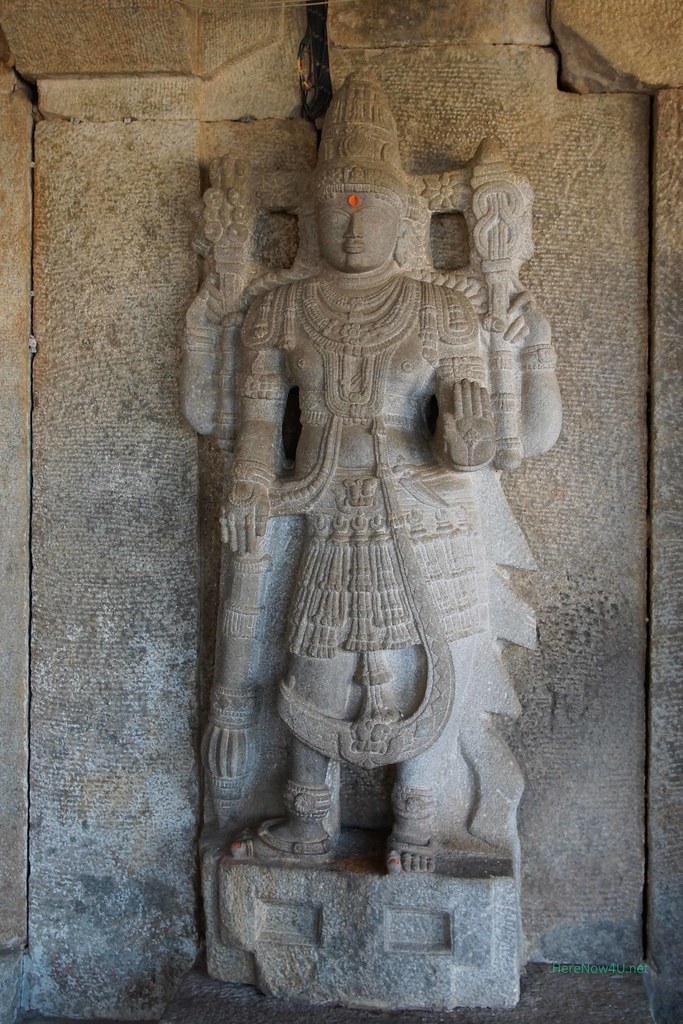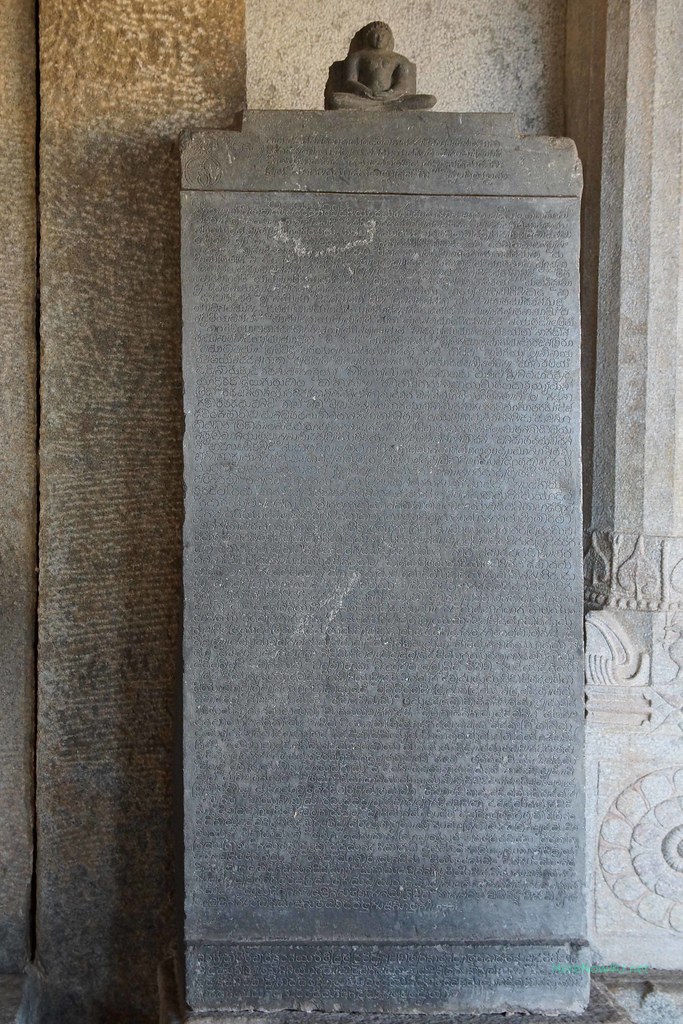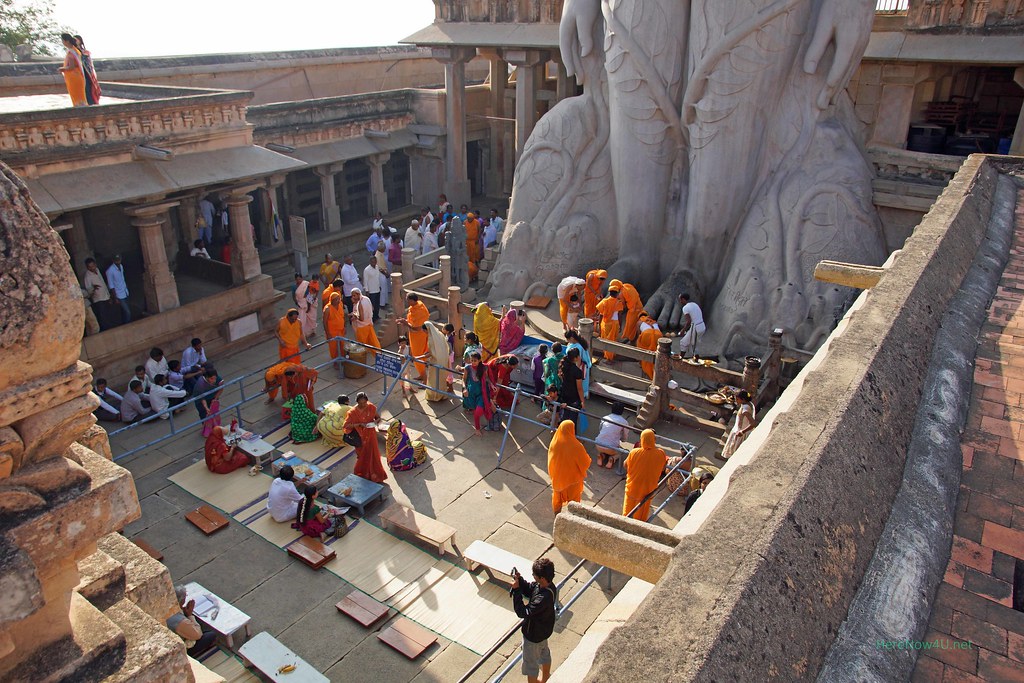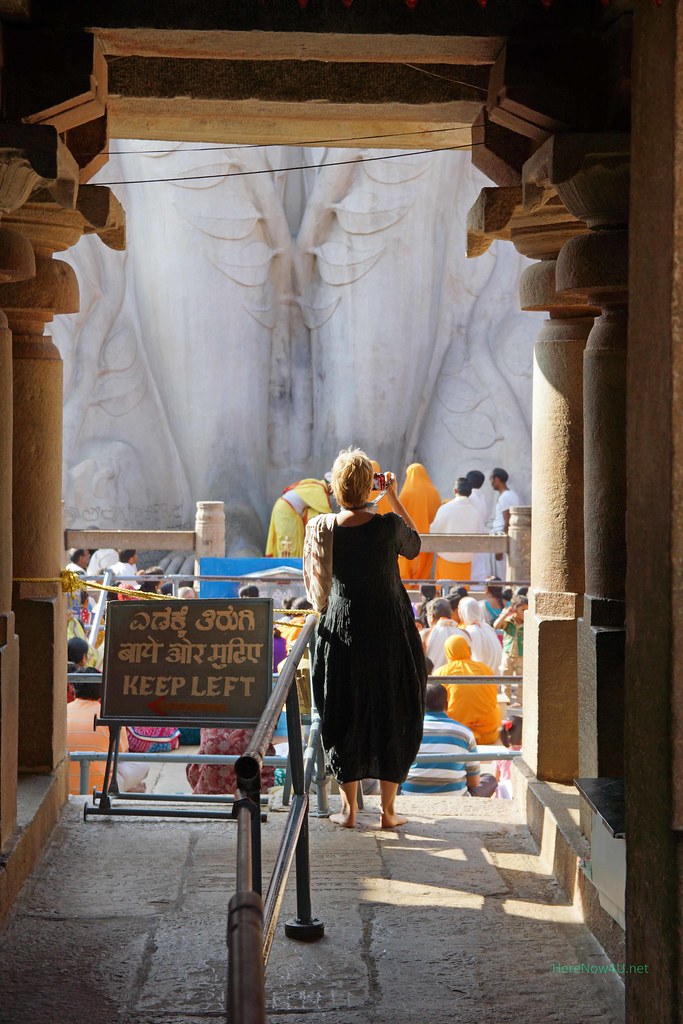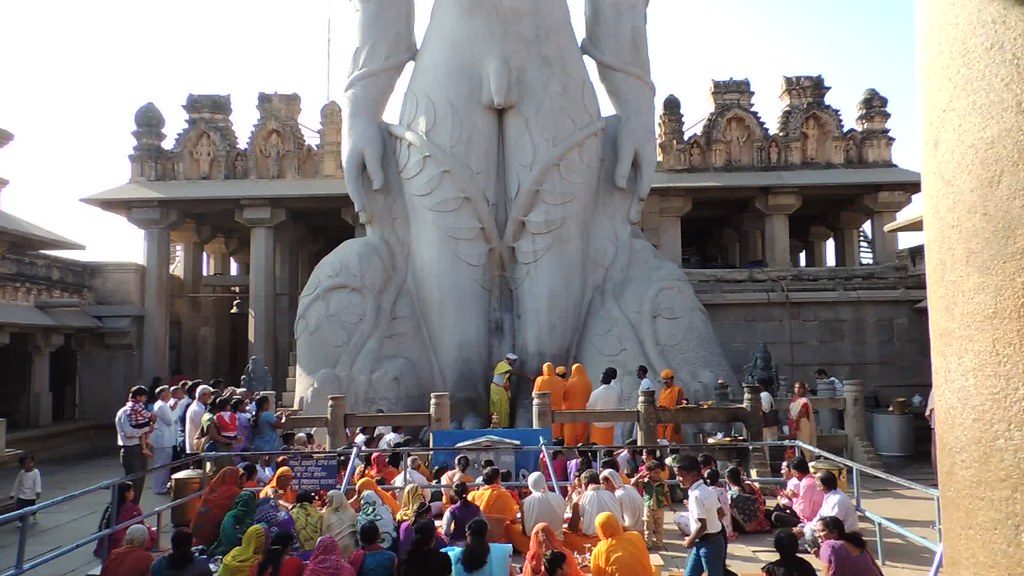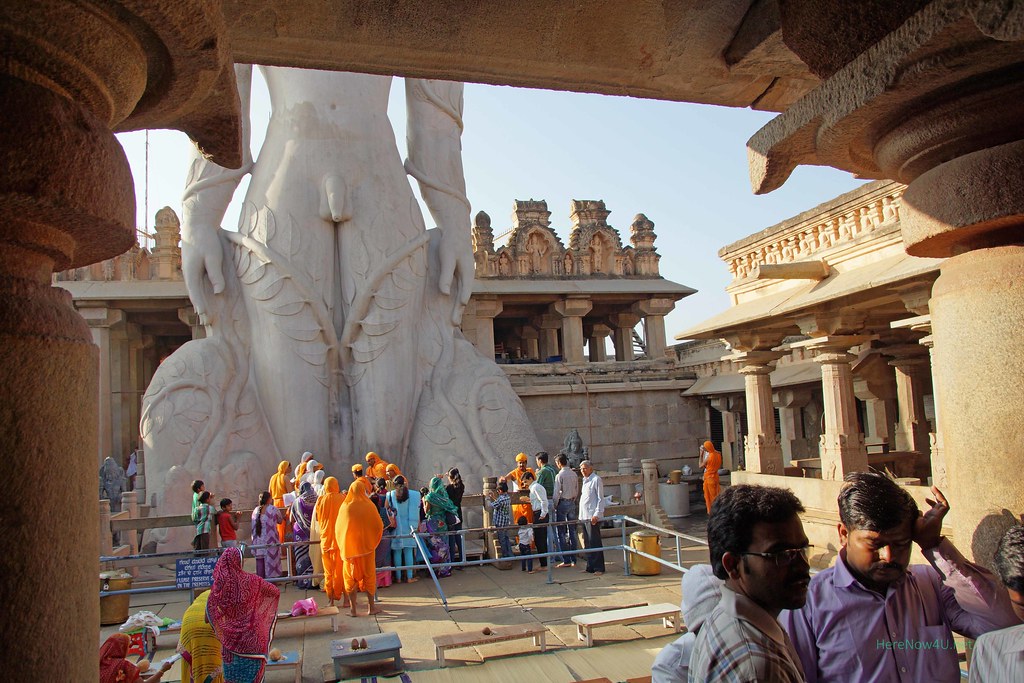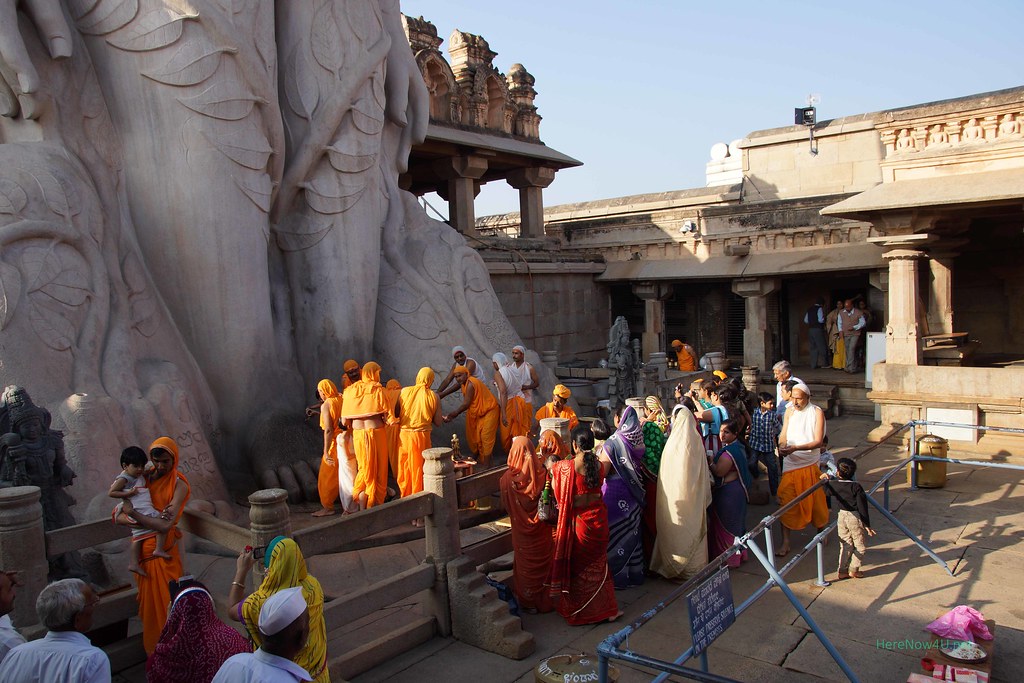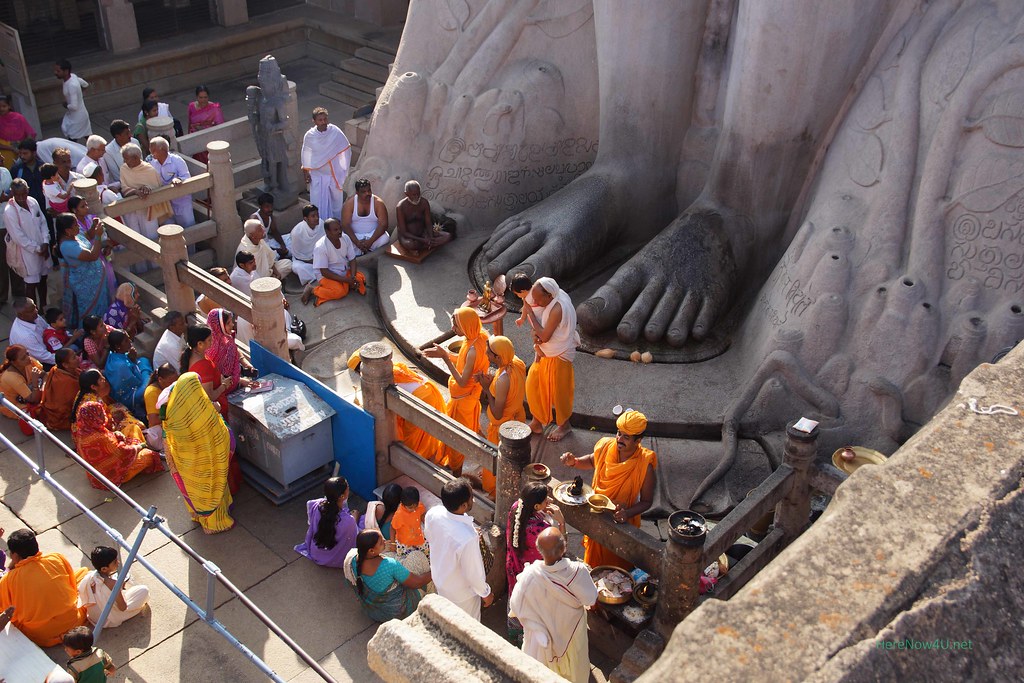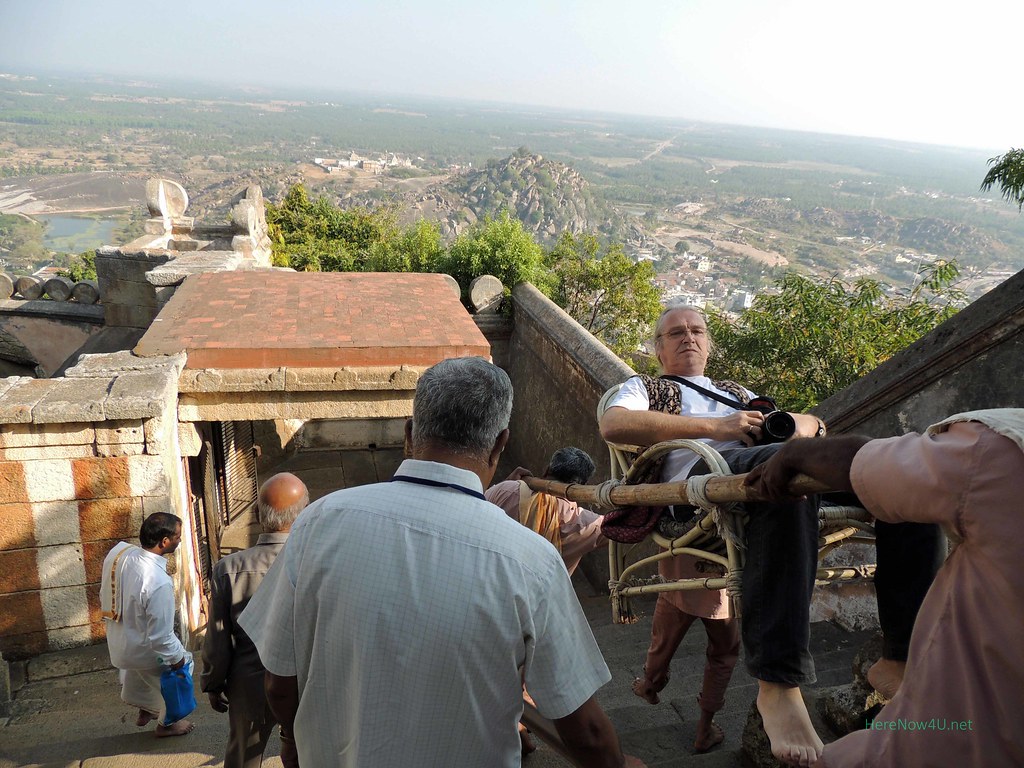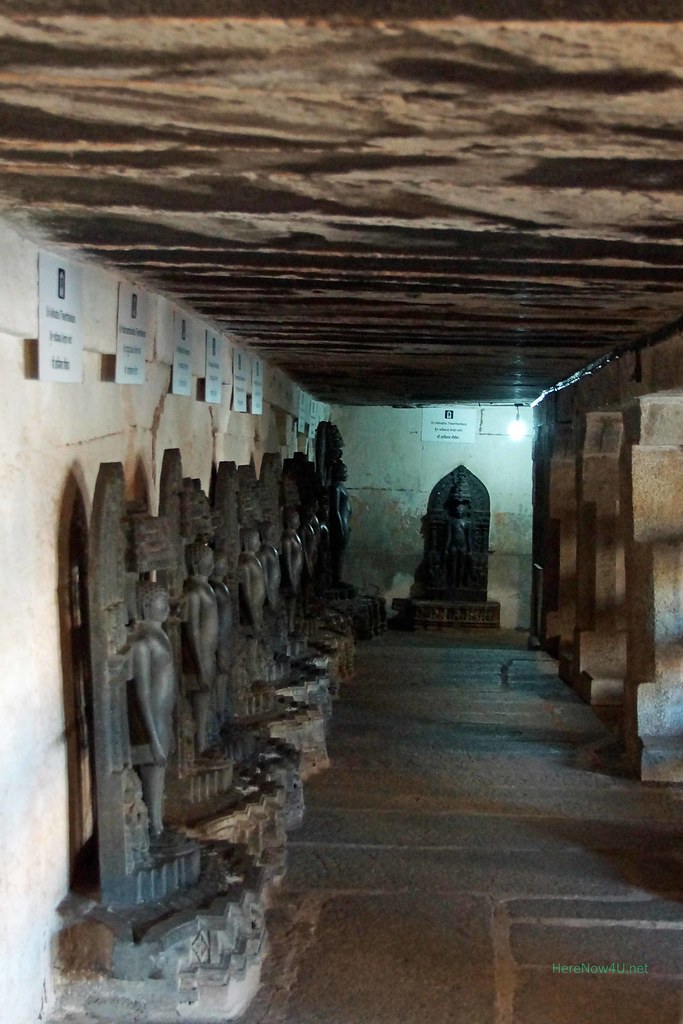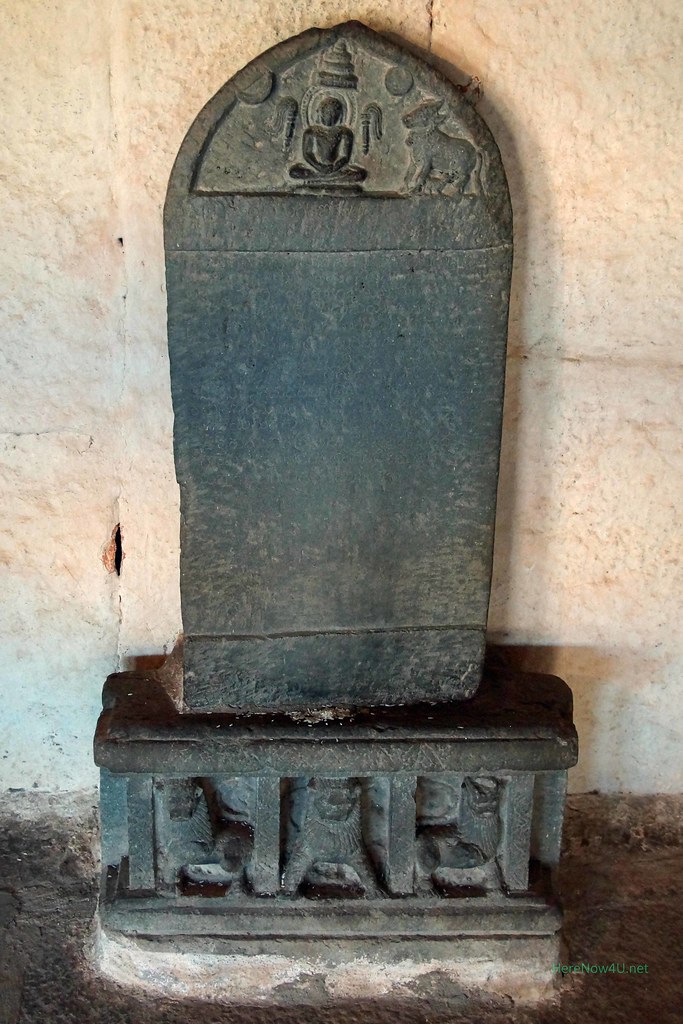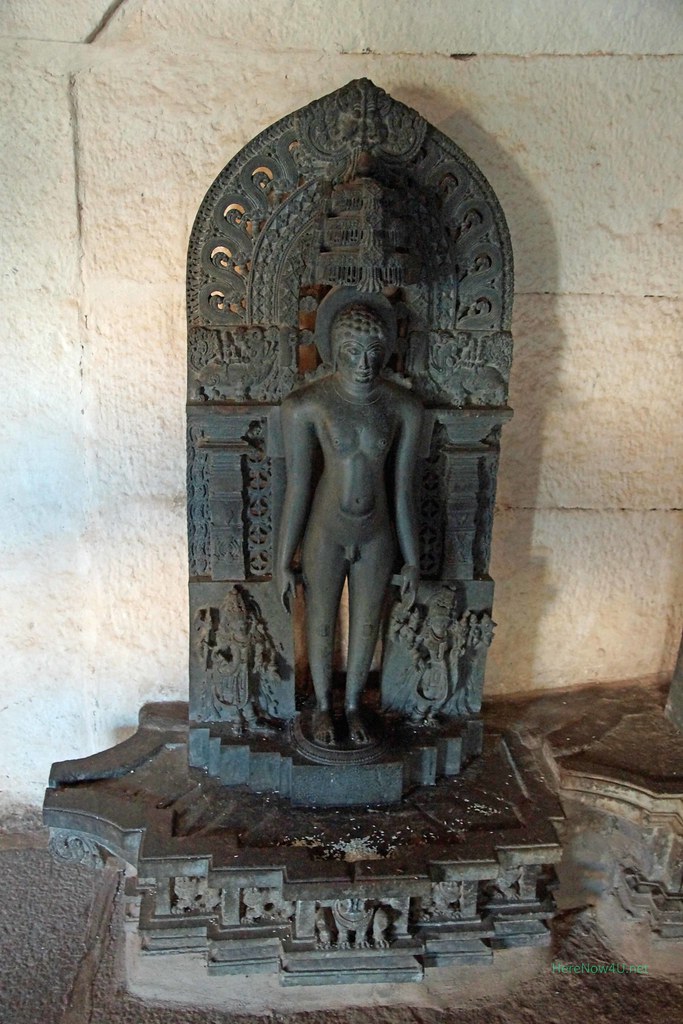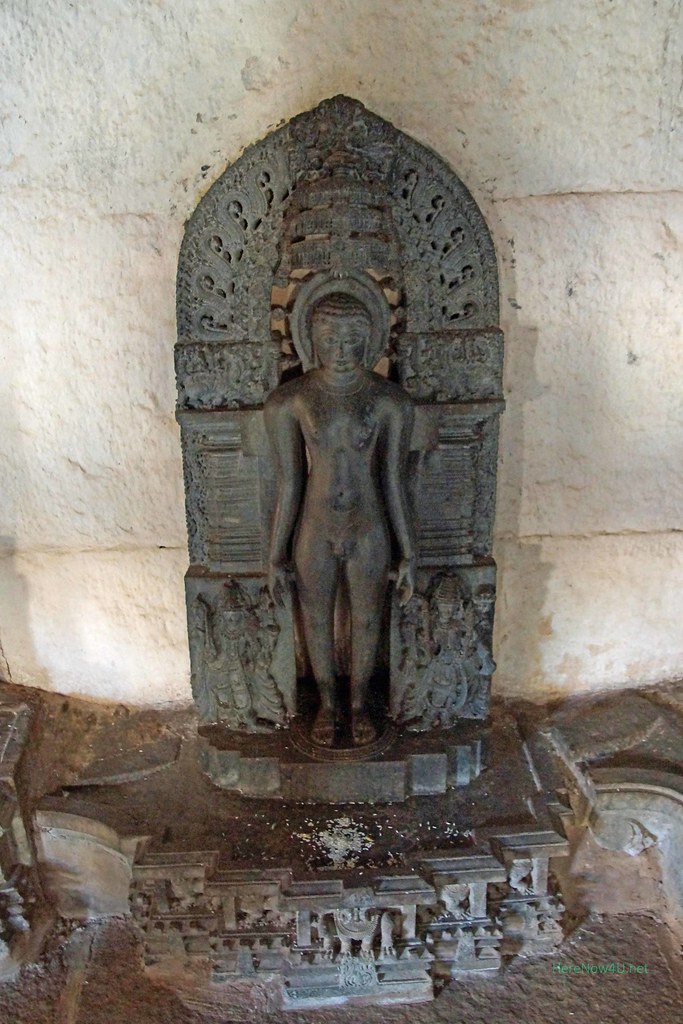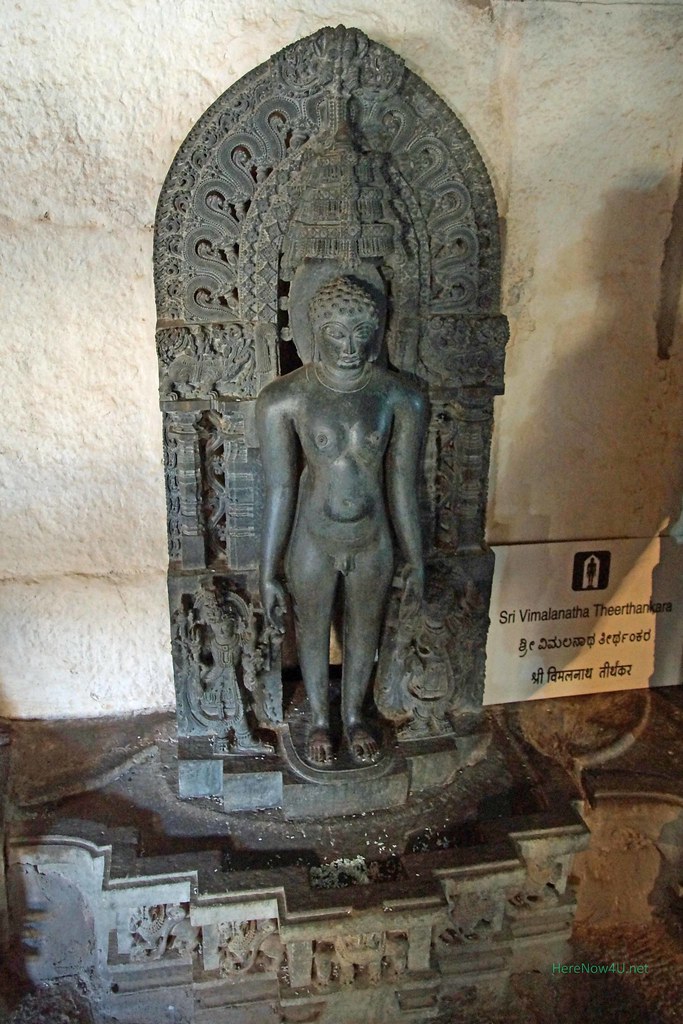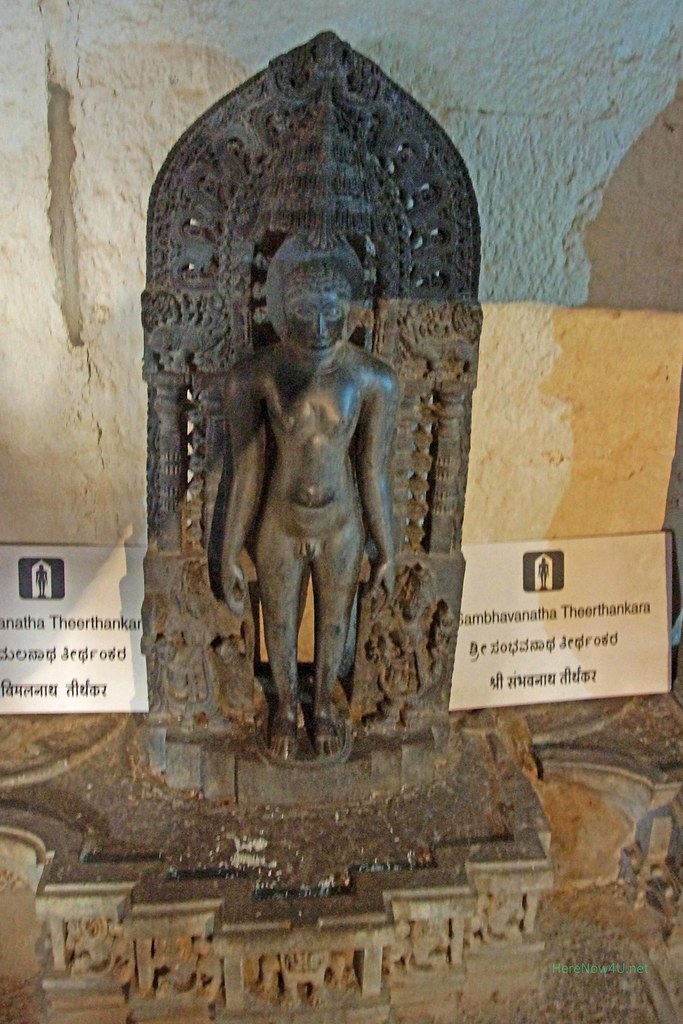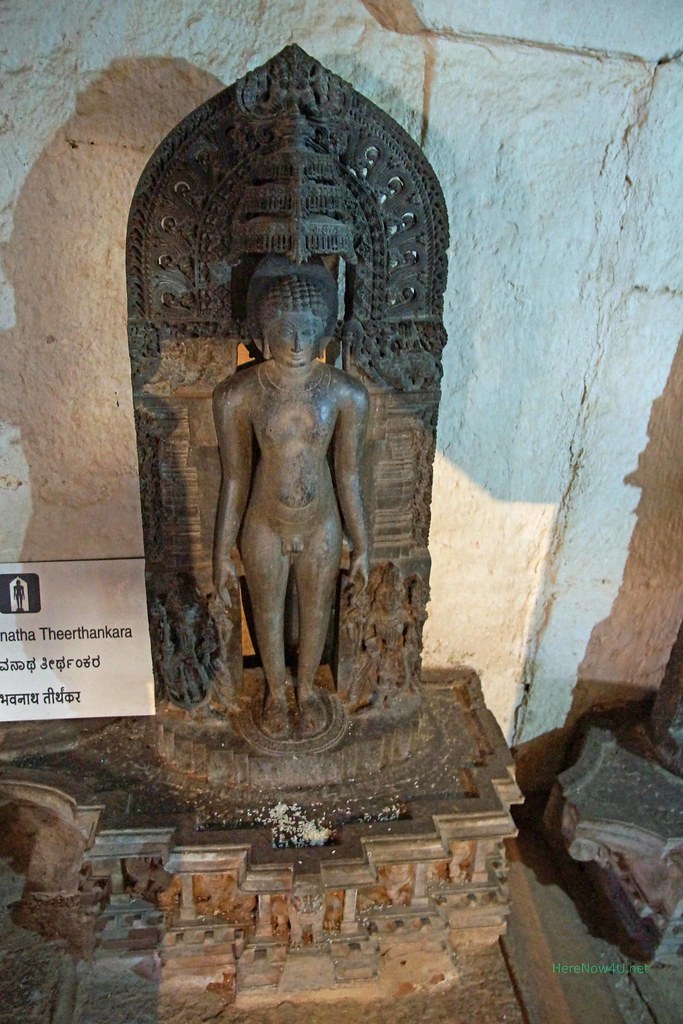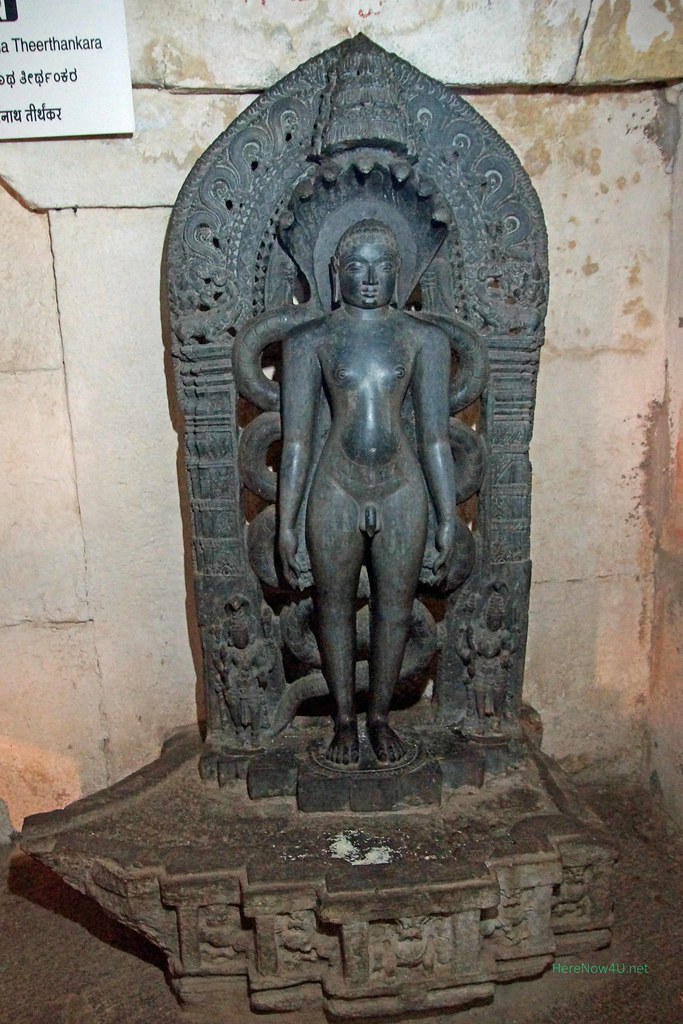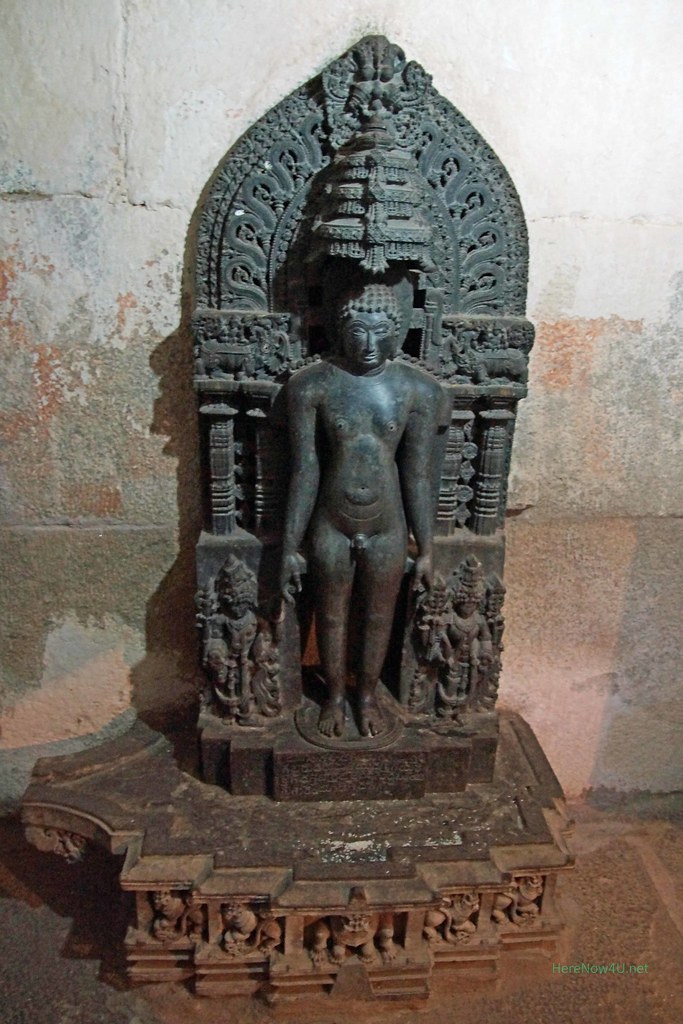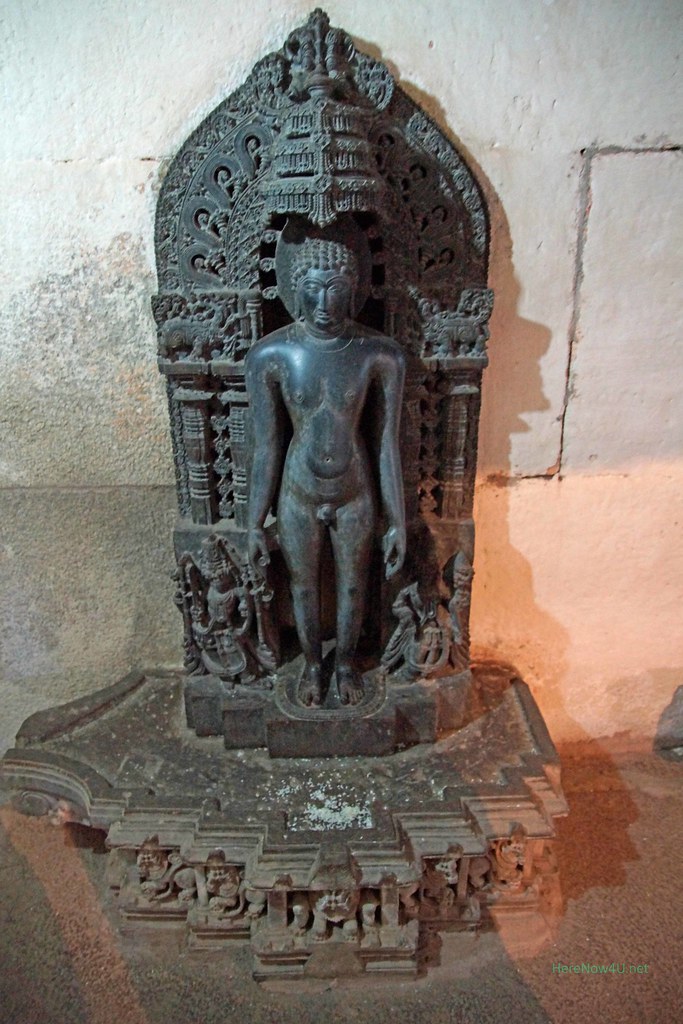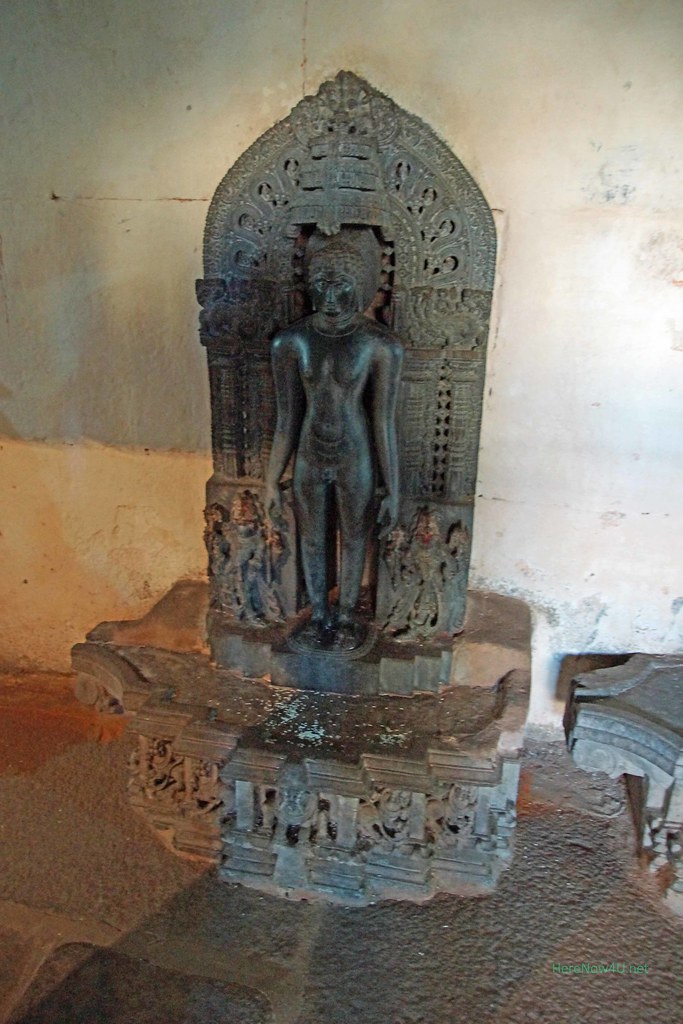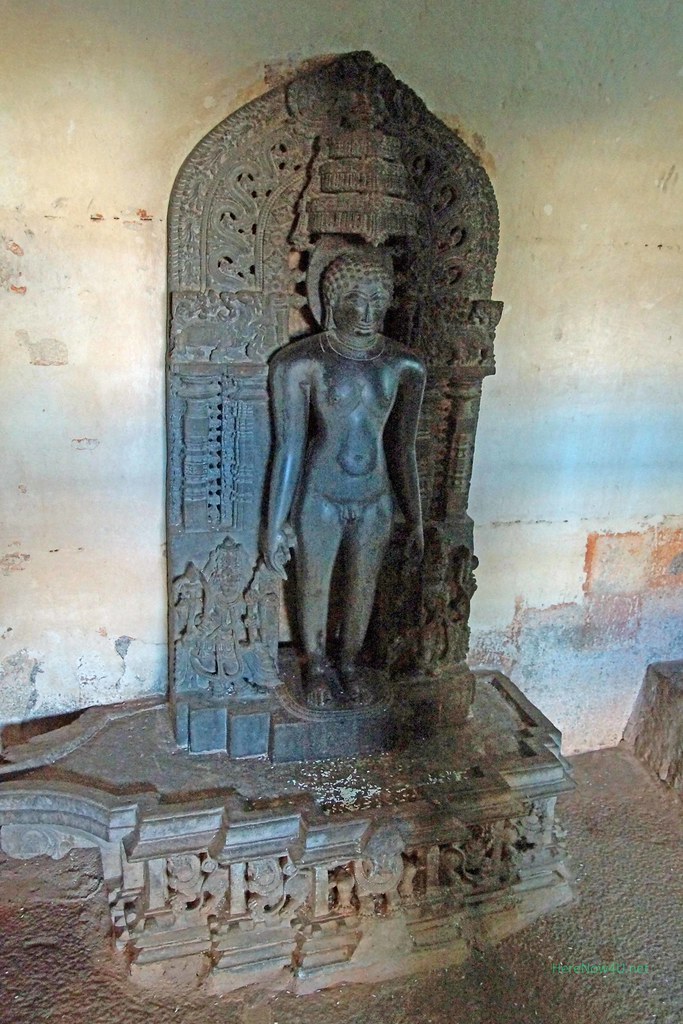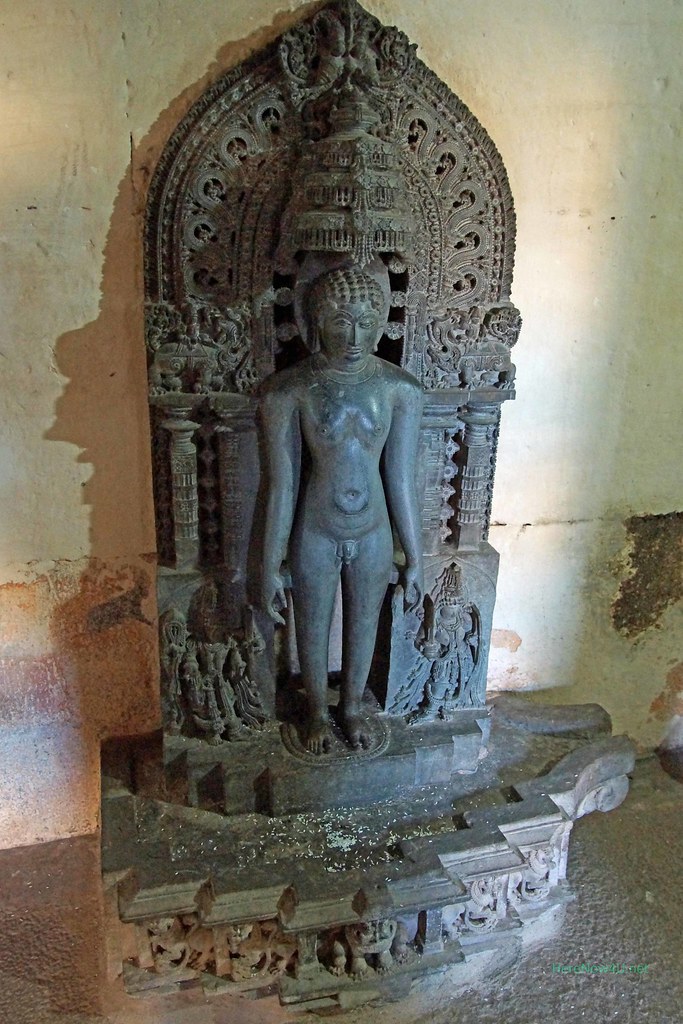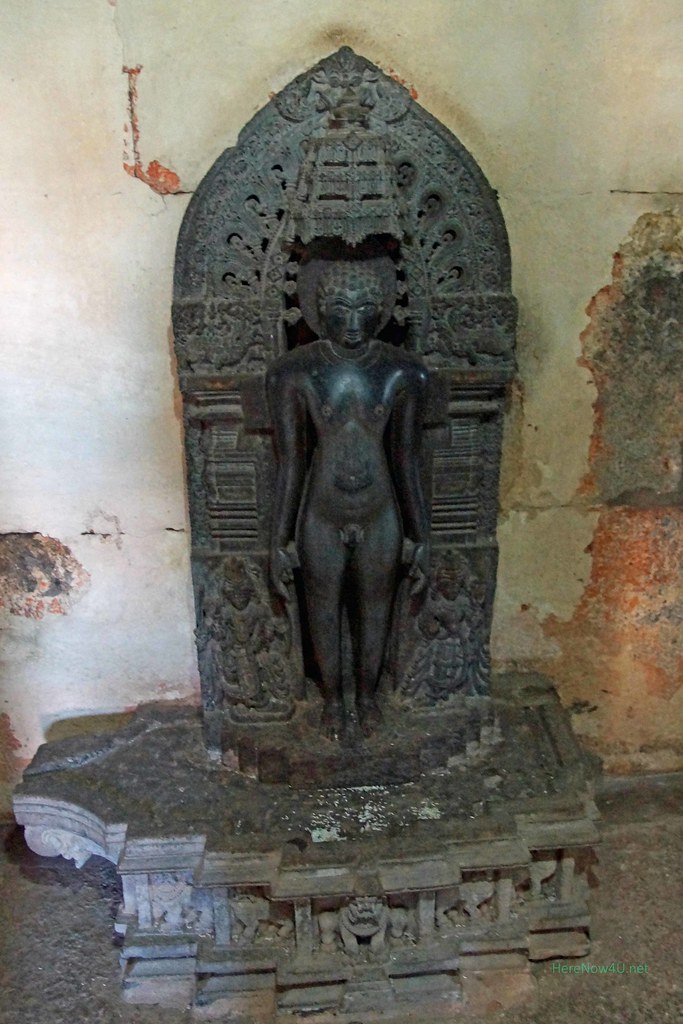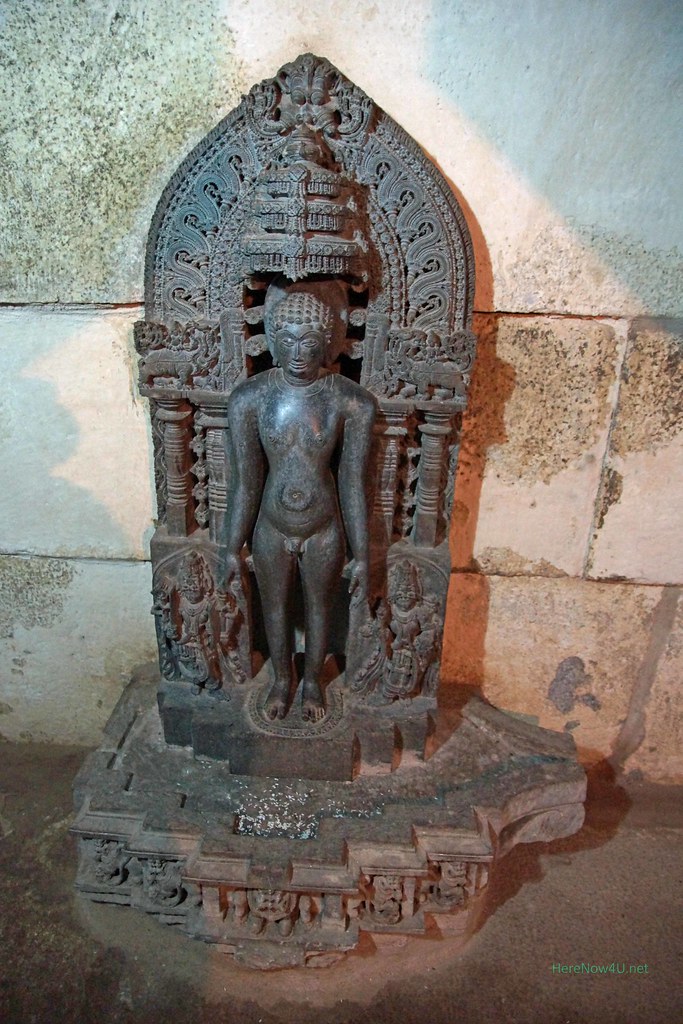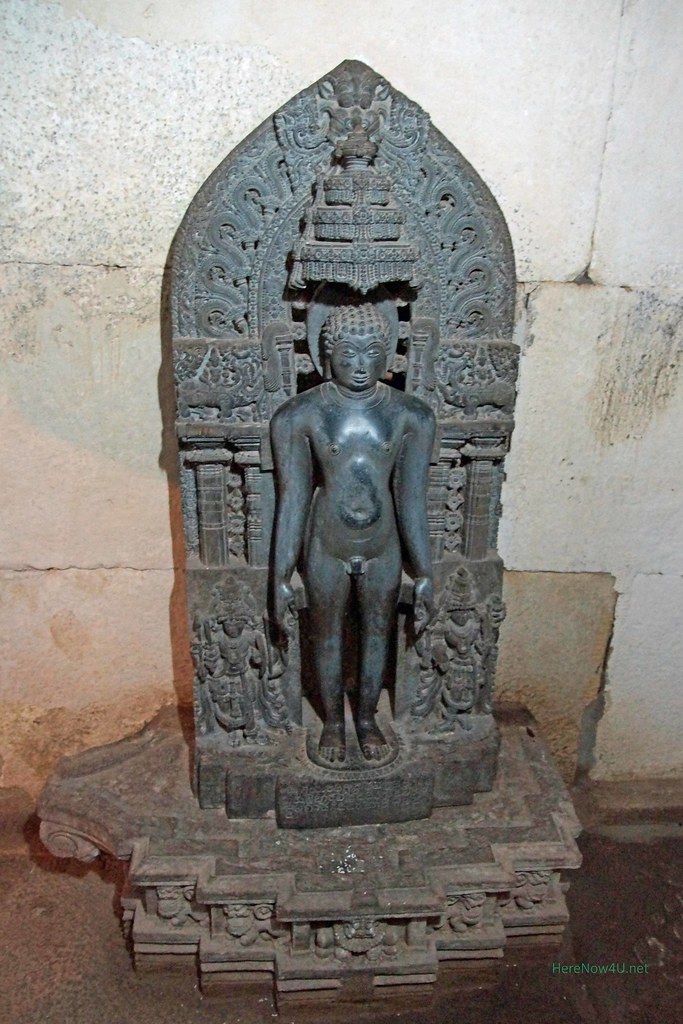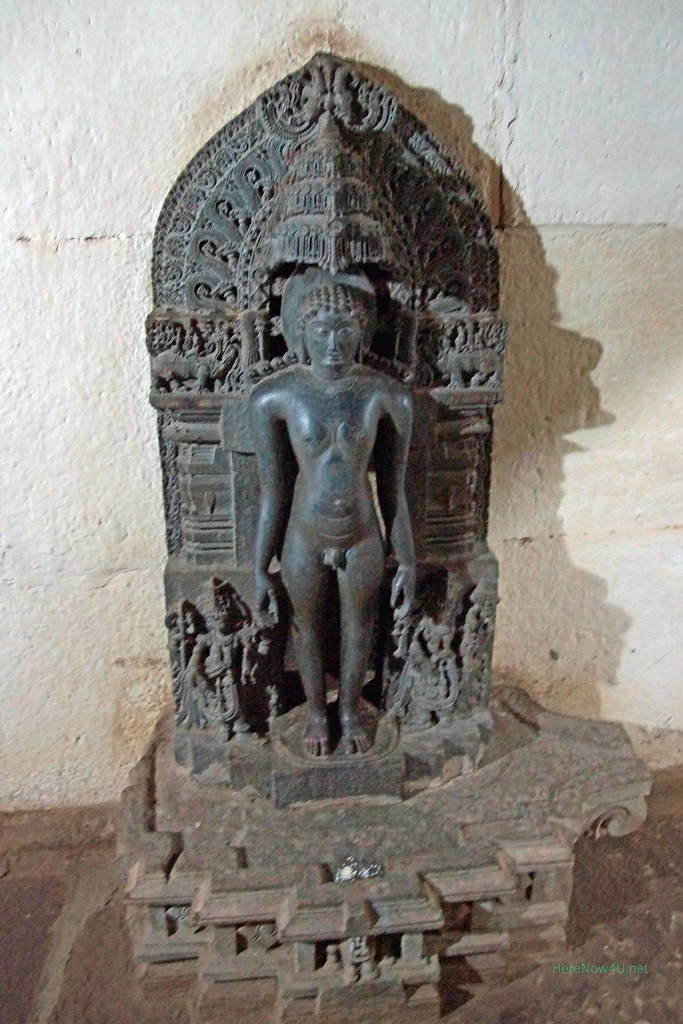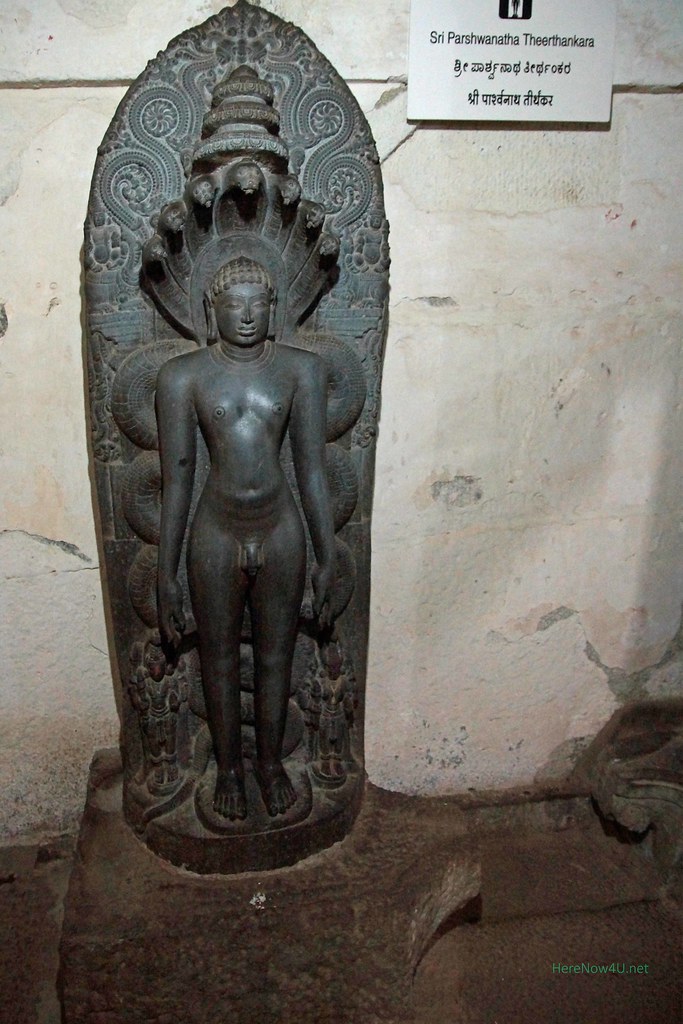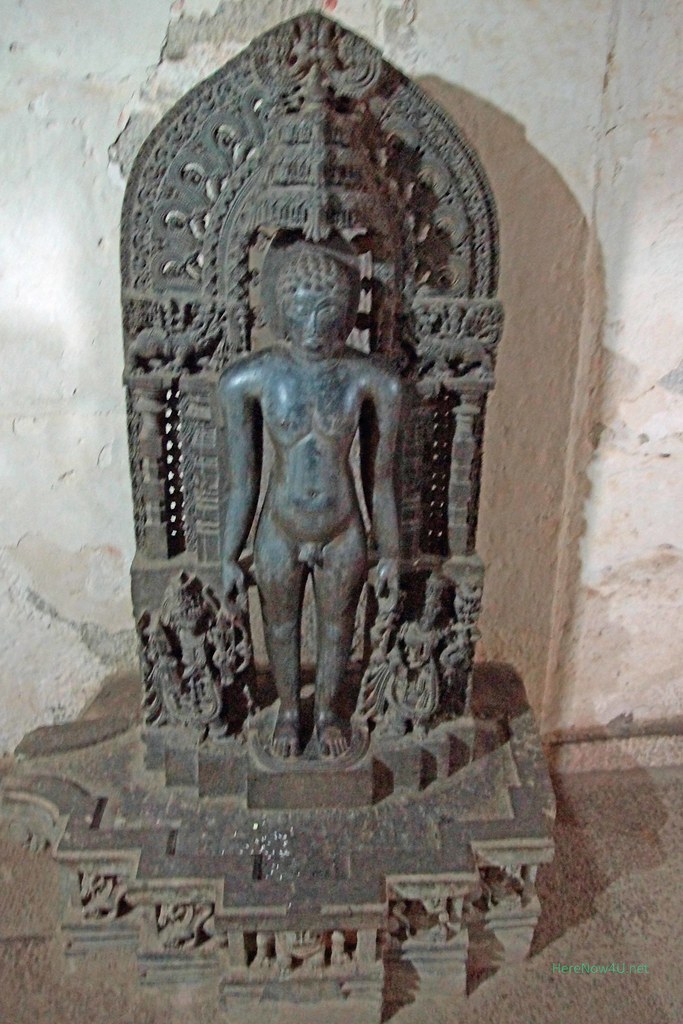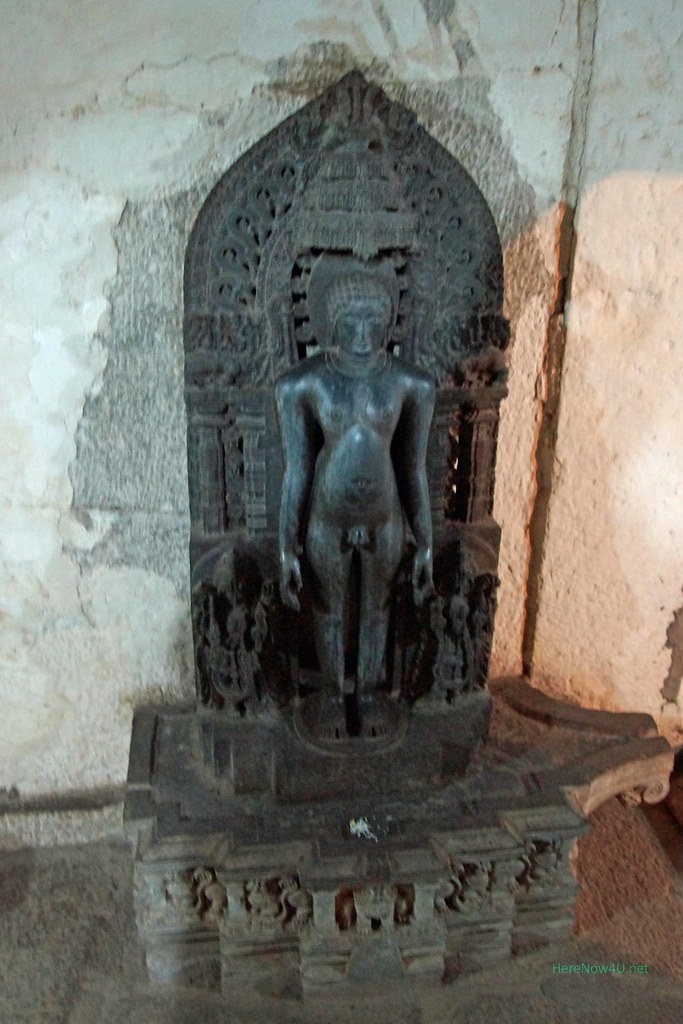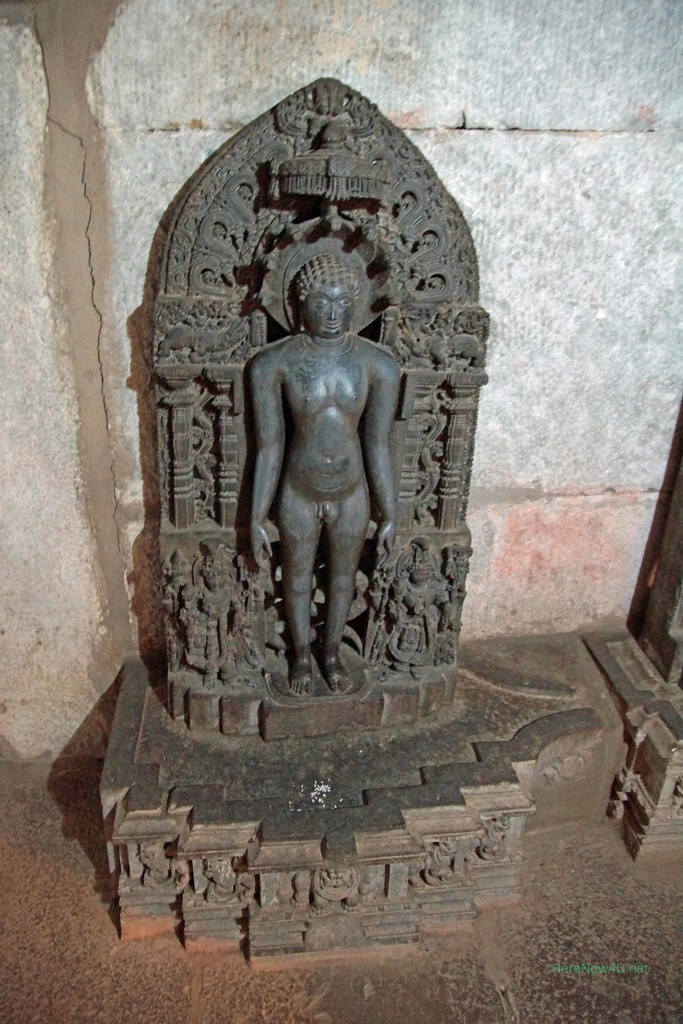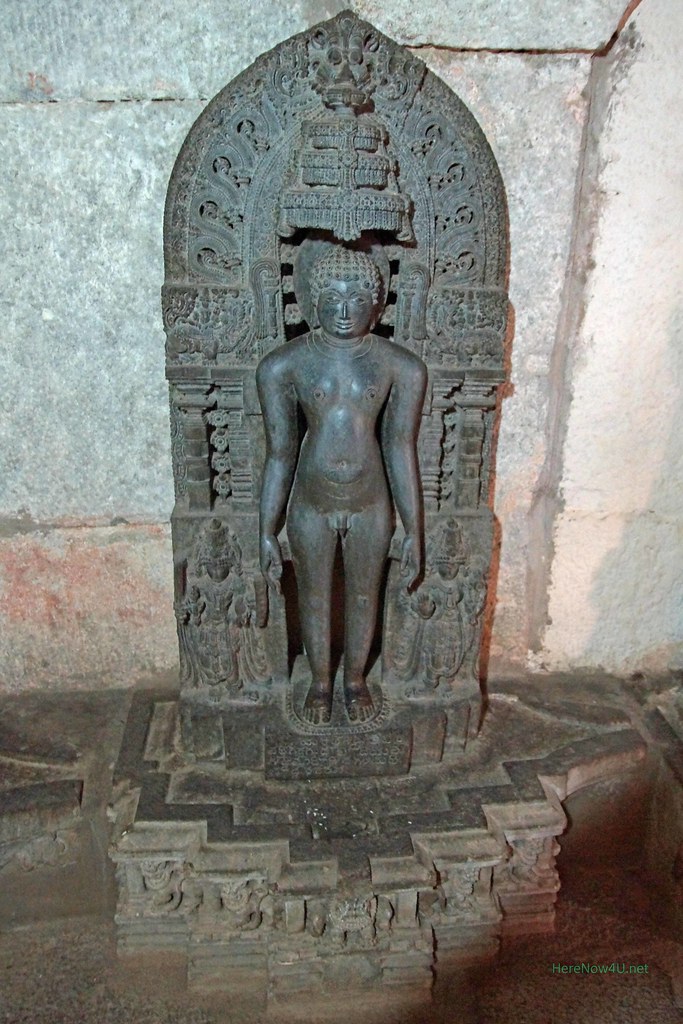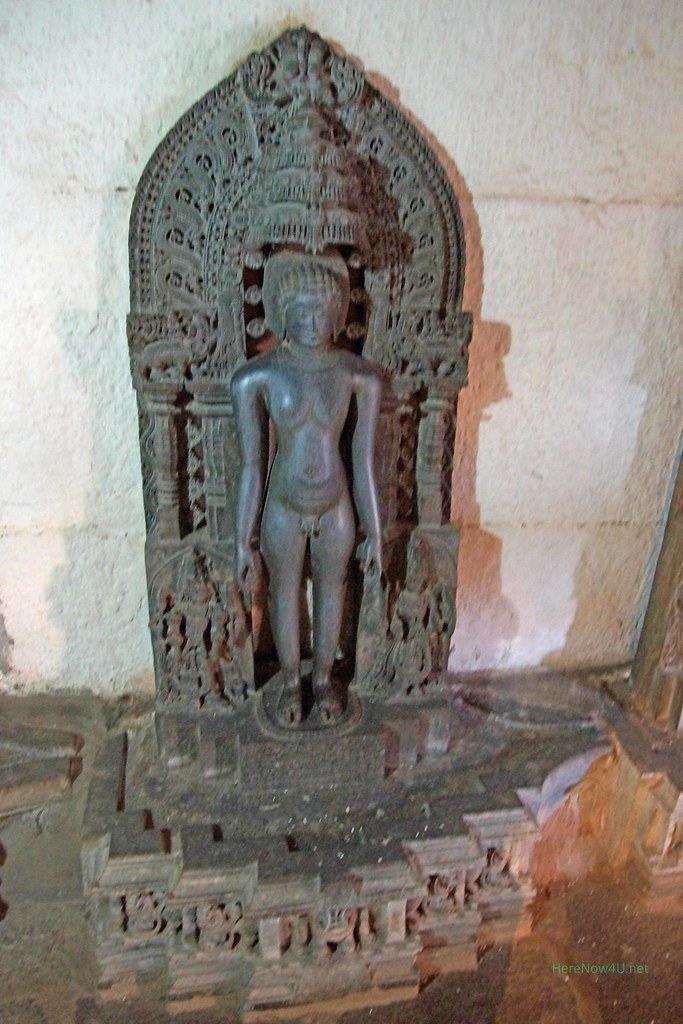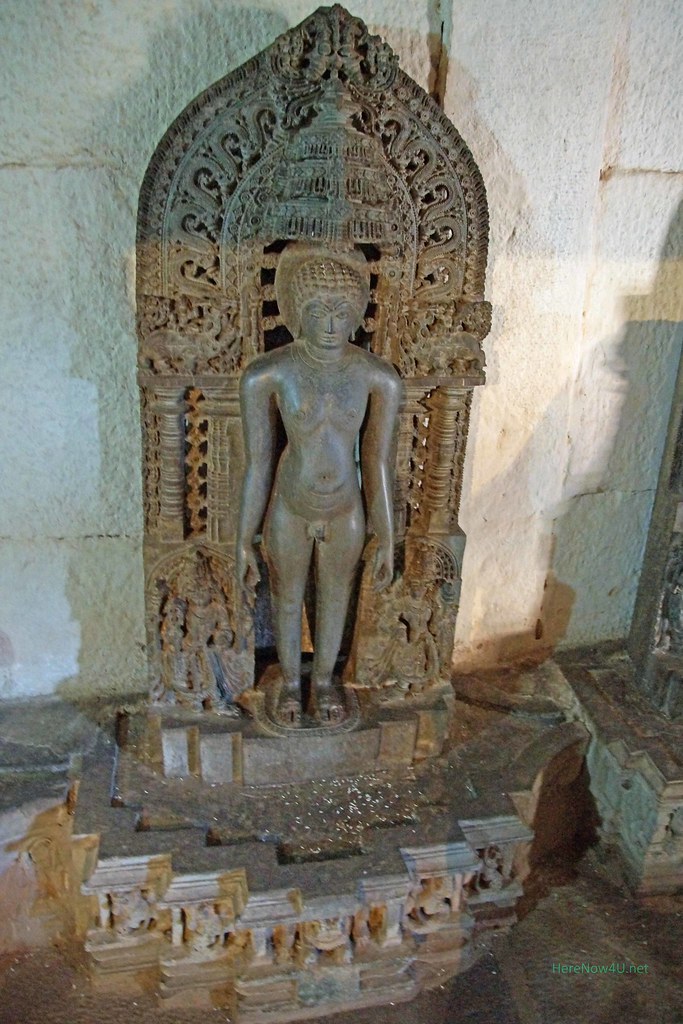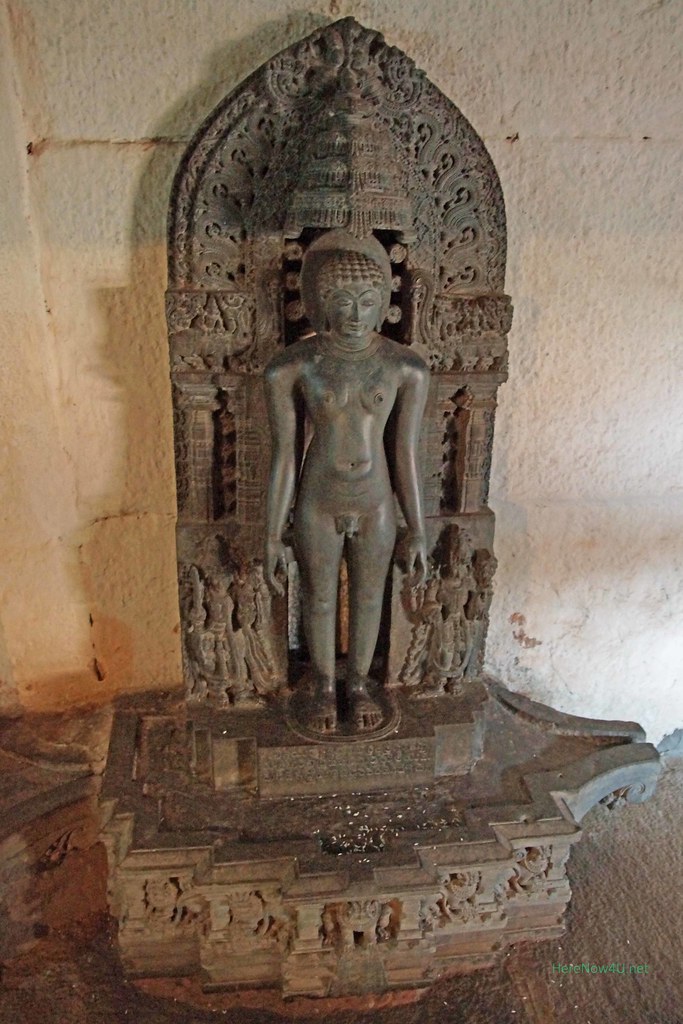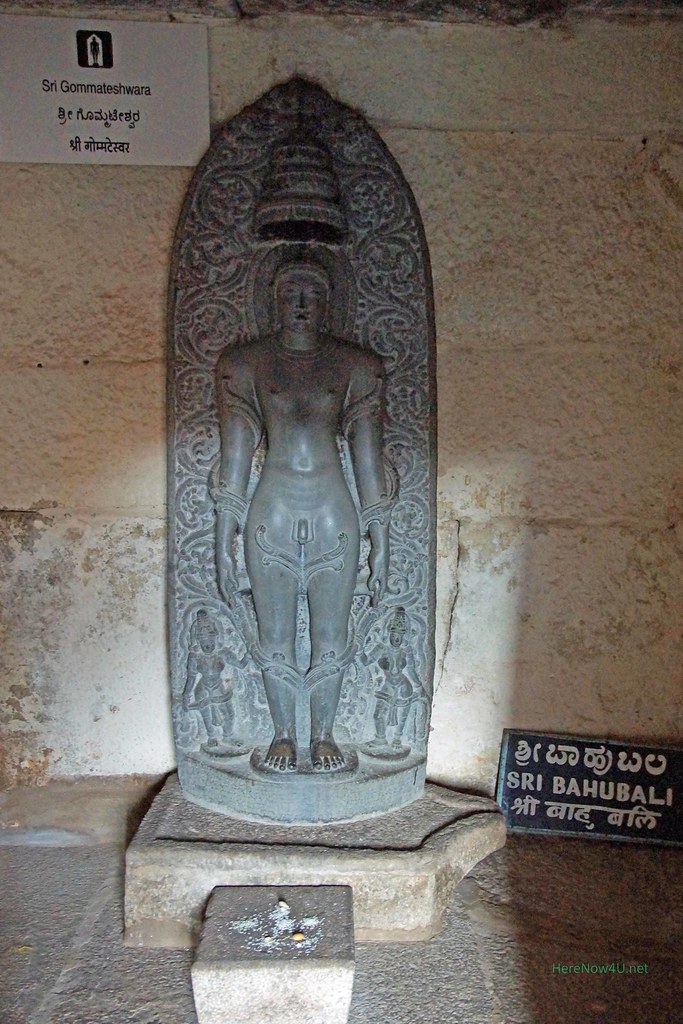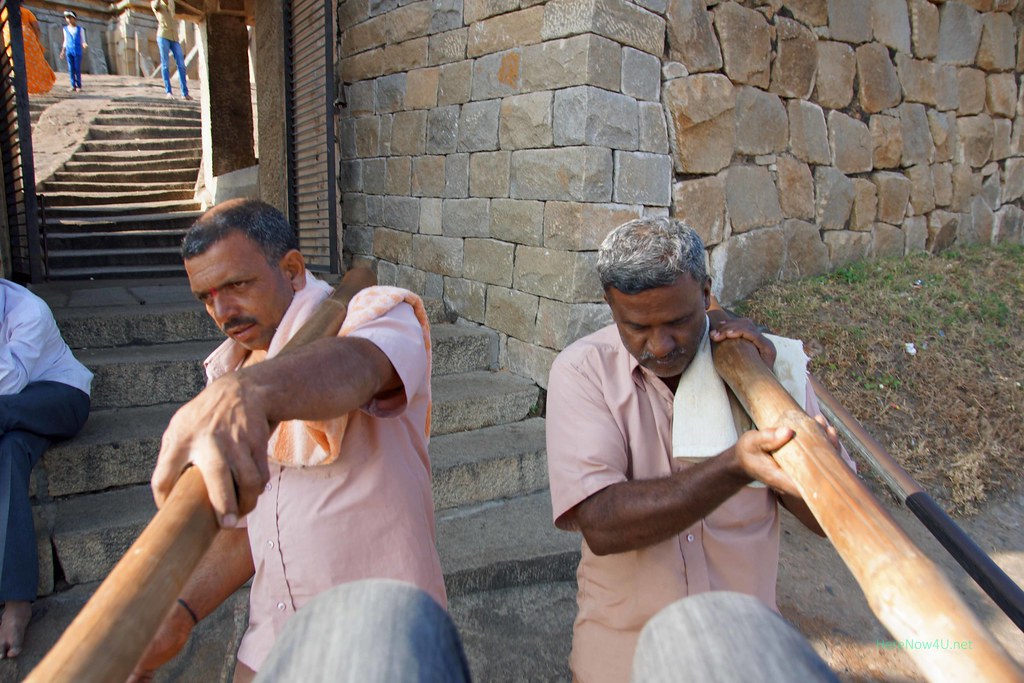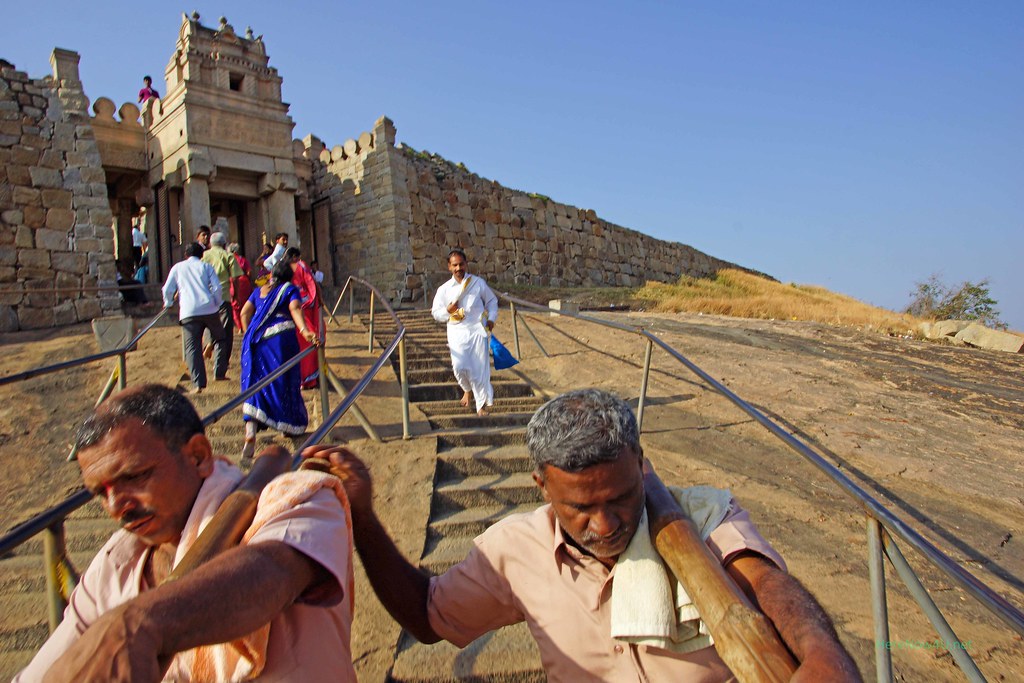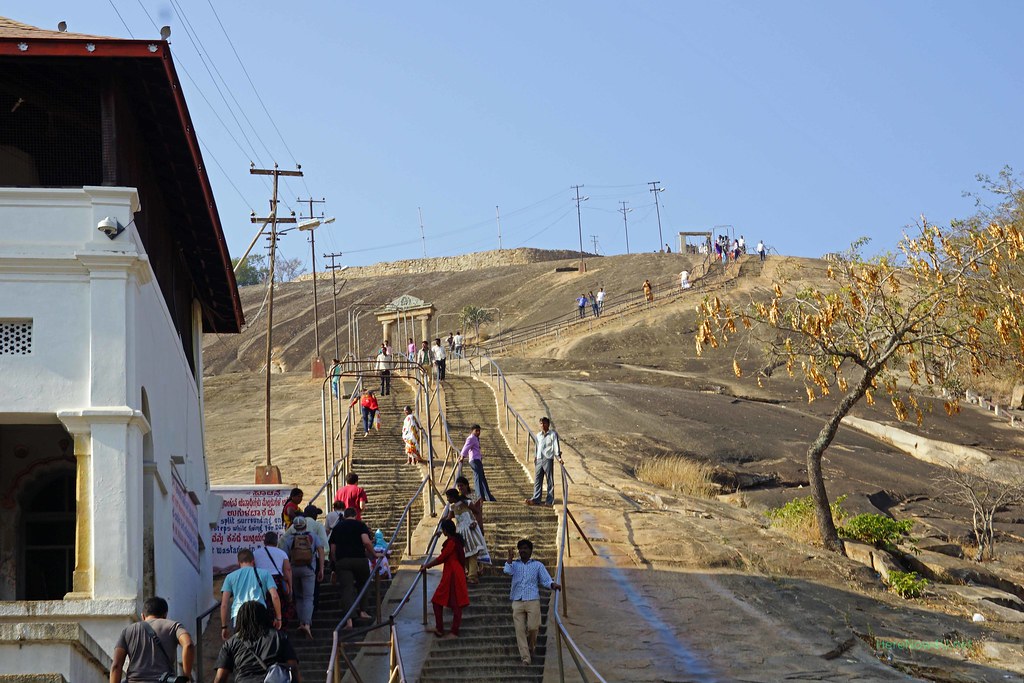The statue of Bahubali on Vindhyagiri Hill in Shravanabelagola with its 17m height is the highest artwork made from a single block of stone, a monolith, worldwide. In 10th century CE a Jain ruler of Karnataka had commissioned the monolith on top of the Vindhyagiri Hill. The order had been put into action immediately and completed after some years only. In August 2007 the monolith of Gommateshvara, the Lord on the Hill, another name for Bahubali, has been elected first out of 7 wonders in India by the readers of “Times Of India”. By now, Bahubali, son of 01. Tirthankara Rishabha has become for many an embodiment of the doctrine of Ahimsa. Bahubali did not kill his brother. As a consequence he renounced the worldly power gained in a fight against his brother and chose the life of a monk instead. For one year he steadfastly stood in deep meditation in the midst of an ant heap, and even plants entwined around his arms, legs and body. Such was his power of endurance.
There has been written a lot on the Lord on the Hill, and undoubtedly it is very special to visit such a famous pilgrimage site. Certainly everyone here is experiencing his own history, i.e. has an own connection to it. At our arrival we had seen long queues of visitors winding up the hill. On the morning of 15th January we wanted to join them. Christian Geerdes had passed a rather disturbing night, fever and asthmatic cough had withdrawn sleep from him. Actually it was planned to start short before sunrise, but something had cropped up. So we later were boarding the car destined to bring us to the foot of the hill. Better to save the energy for climbing, our experienced hosts had remarked. While we drove to Vindhyagiri Hill, Christian Geerdes again had a very bad fit of coughing. At arrival our hosts mentioned the possibility to be carried up the hill on a chair. Better to be carried than not going at all, an opportunity for a victim of English flu to get on the top of the hill anyway. 4 (!) strong men had to shoulder the chair which obviously had been made for smaller persons and normally was carried by two only. The 4 hurried away with their burden, and we only were able to catch up with them when they took their first rest.
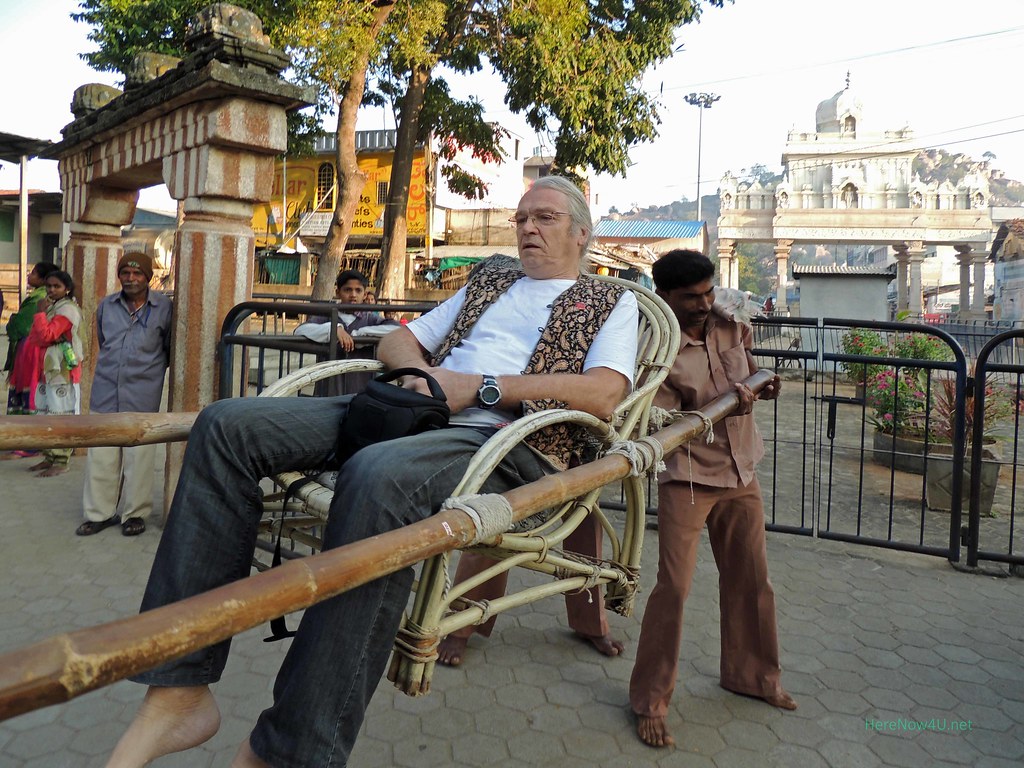
Two small porters are not enough, …
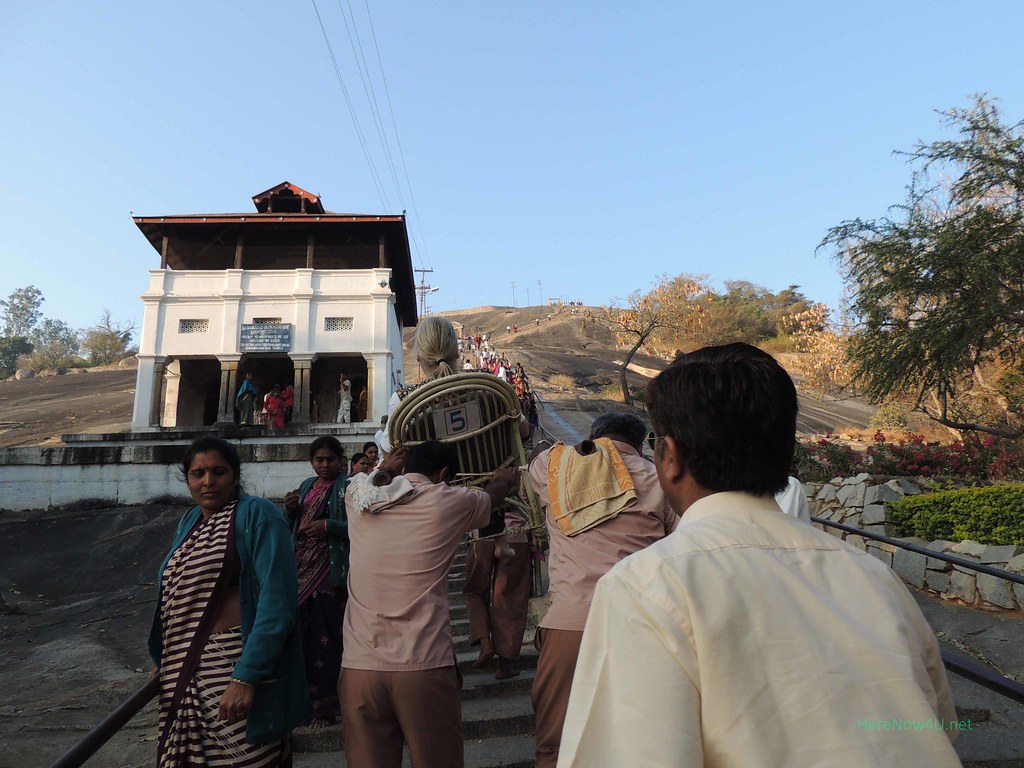
…four strong men had to be found.

That far the porters were ahead of us!

Until here all was fine, but to be carried up the hill with the head down was some new experience!
The four of us climbed up the hill: Prof. Hampana Nagarajaiah, Dr. M.A. Jayacandra, responsible for the NIPSAR translation project, Dr. Shanti and I. We also took rest at the archway and looked around. It was a breathtaking view on the landscape and on Chandragiri Hill at the opposite.
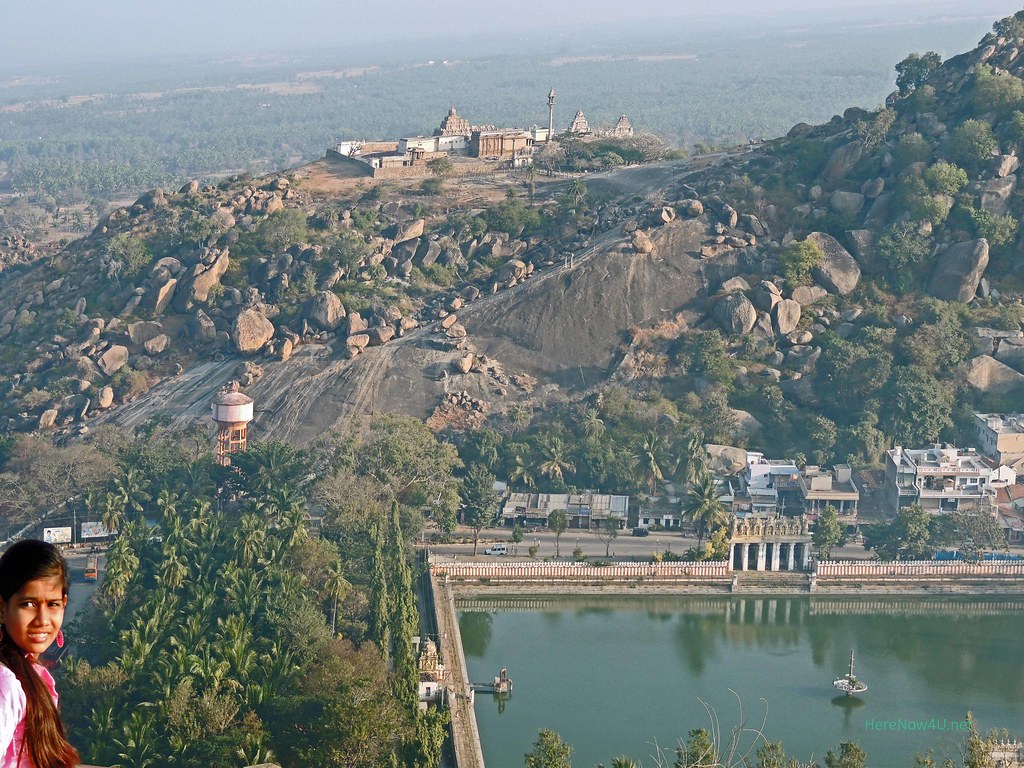
View on Chandragiri Hügel

Tyagada Kamba is the name of this open, one-stored pavilion with an artfully craved column in the middle.
From here in 10th century CE a minister of the king is said to first have distributed alms, later all his worldly properties. In its original form the pavilion consisted of the four columns on the ground and the fifth in the middle only. The inscriptions on the middle column were replaced after 200 years. The first store was added 500 years later. The carvings on the first store are from another area than those below.
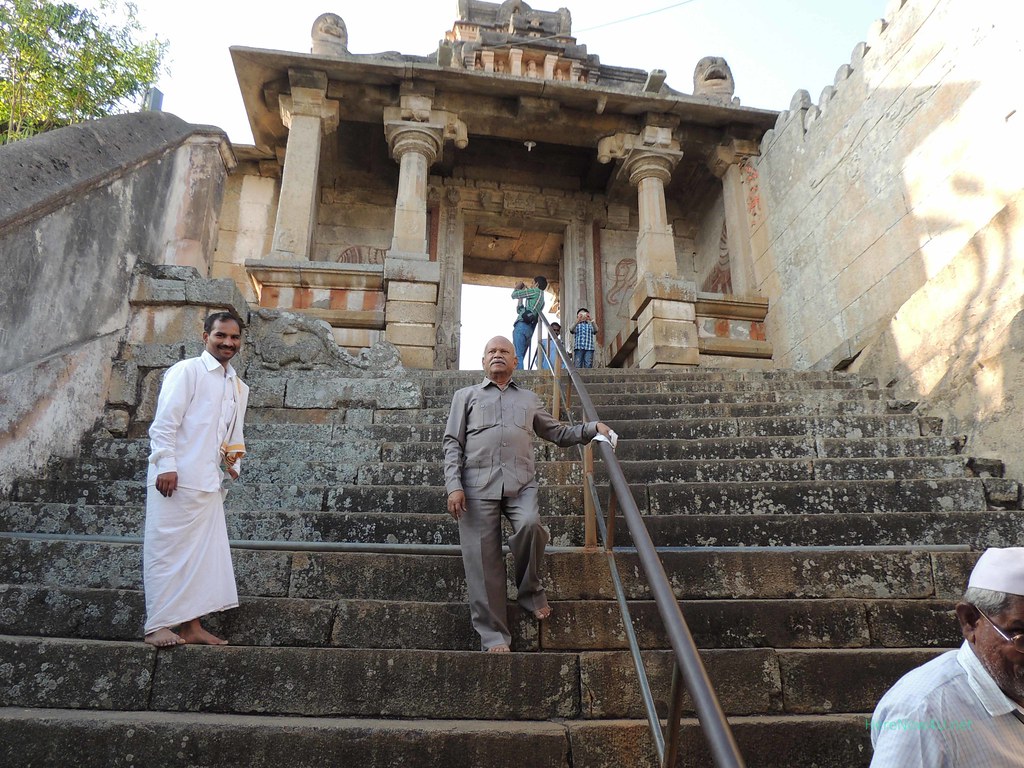
Nearly arrived! Dr. Shanti and Prof. Hampa only have left some few stairs to the entrance of the temple.
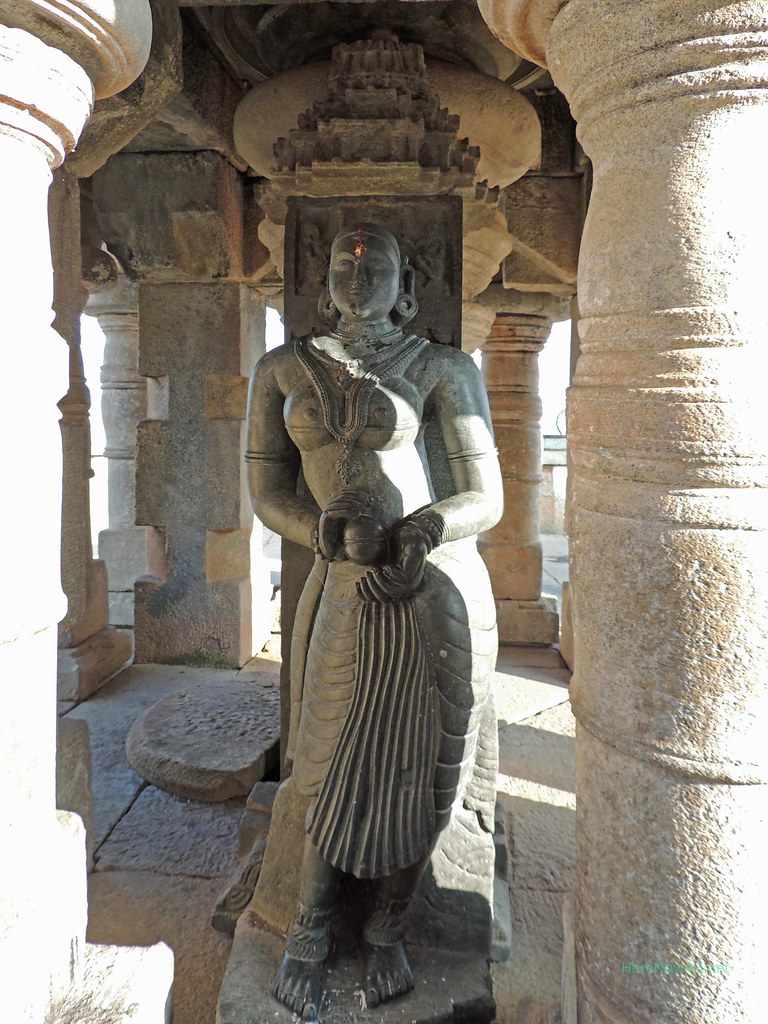
The Goddess Gulab Kai Ajit is said to have stood here to test the mercifulness of her followers by asking for alms, which many denied but taunted her instead.
Shamed for not having recognised the Goddess, her followers not only erected this statue to console her, but also to remind the visitors to treat all people with respect and tolerance, no matter their social status.
In between we had climbed all steps and arrived in the temple where Christian Geerdes was awaiting us already. Arcades with small rooms and niches for statues of Goddesses and Tirthankaras are surrounding the square in front of the famous monolith.
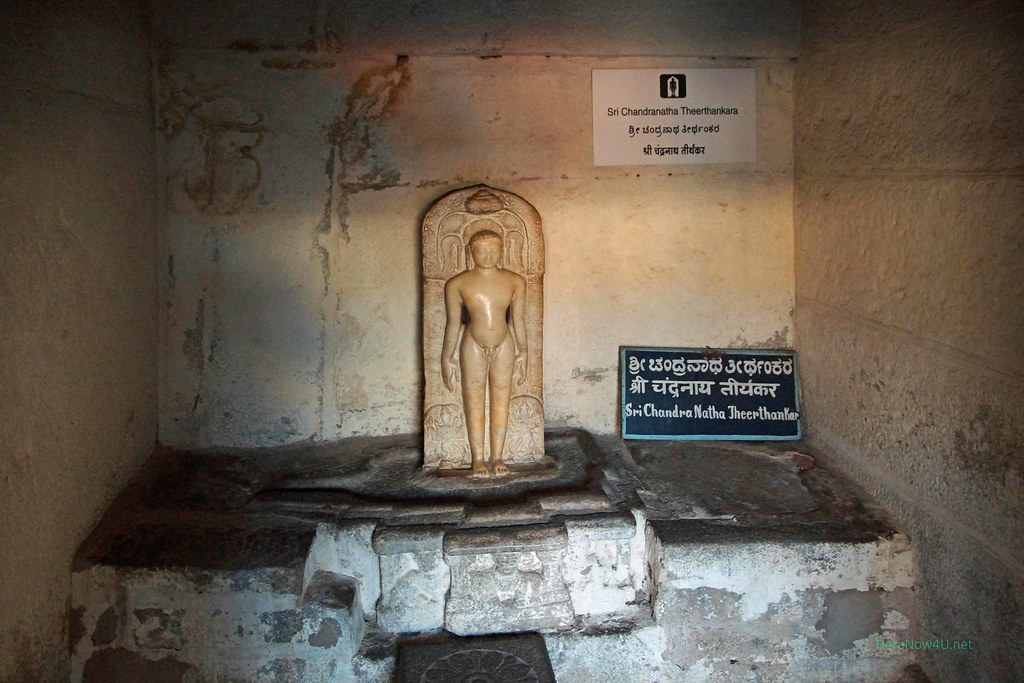
Statue of 08. Tirthankara Chandranatha or Chandraprabha
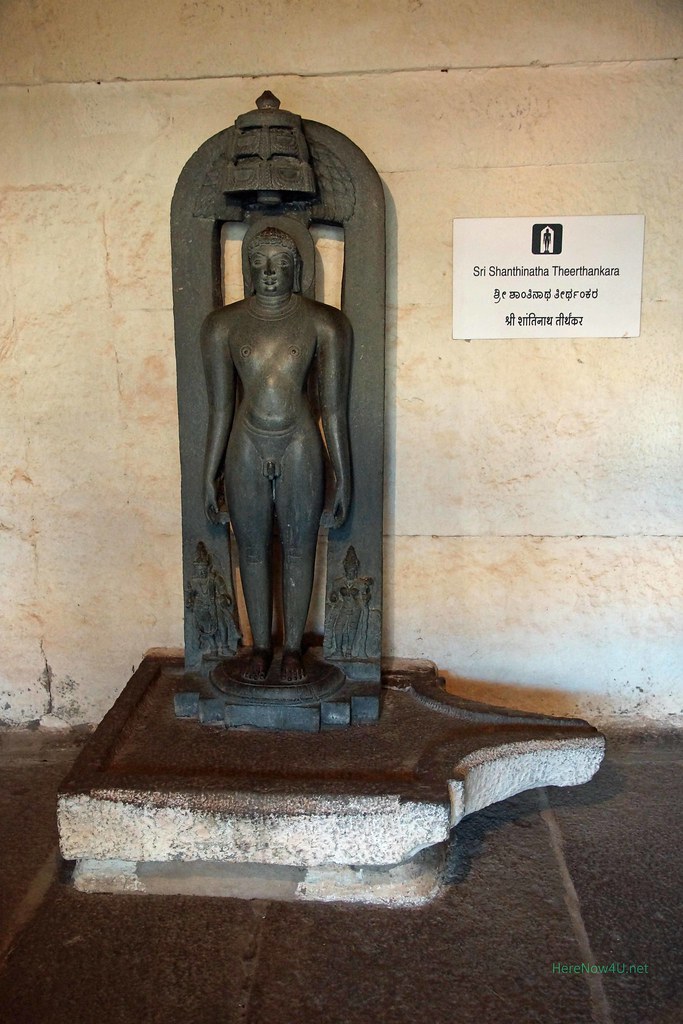
Statue of 16. Tirthankara Shantinatha
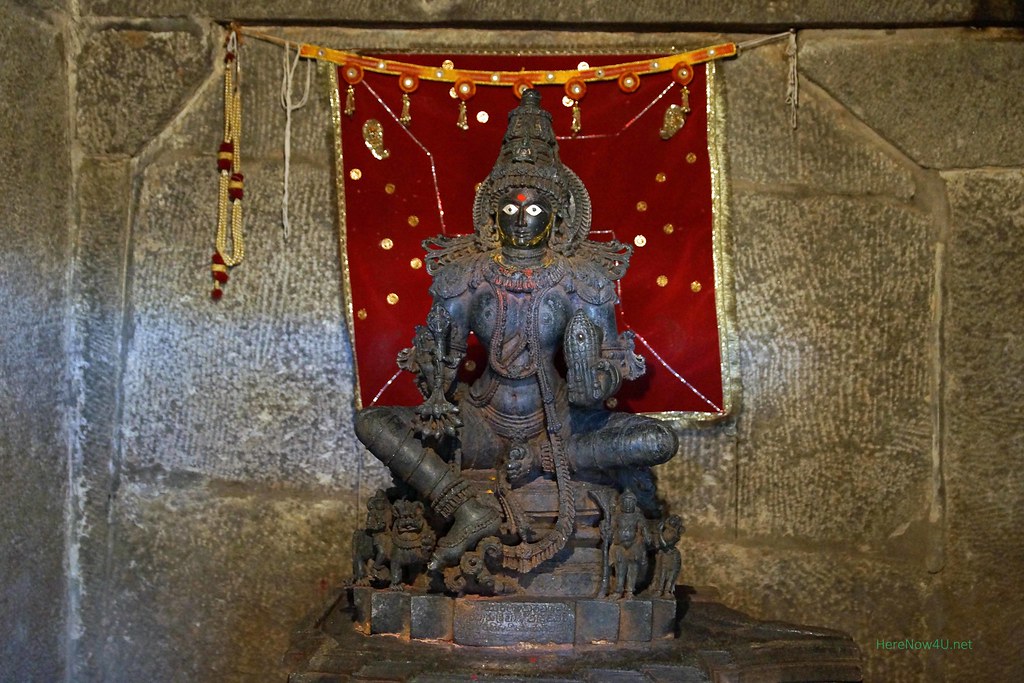
Goddess Ambika
Goddess Ambika, patron of mango, is sitting in Lalit Asana (left leg bent, right stretched loose, typical position of goddesses) with a bunch of mango in her right and a fruit in her left hand. Beside her right foot is a lion, beside her left are her sons. A Tirthankara is sitting in the middle of her crown. Here Ambika is shown with two arms, there are also depictions of her with 4 arms.
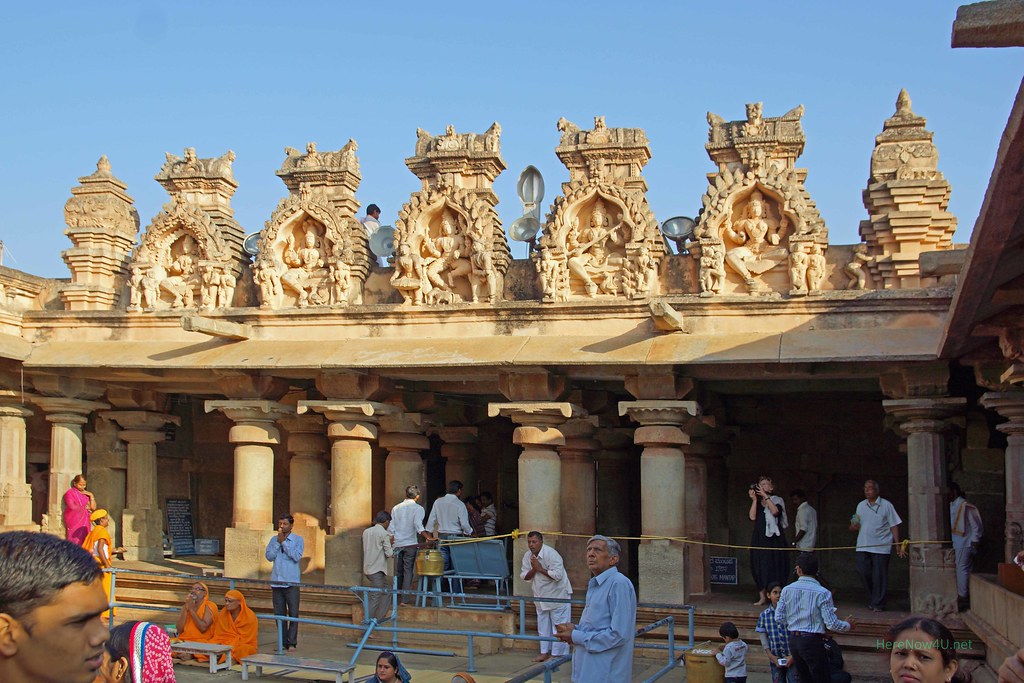
The entrance to the square is in front of the monolith.
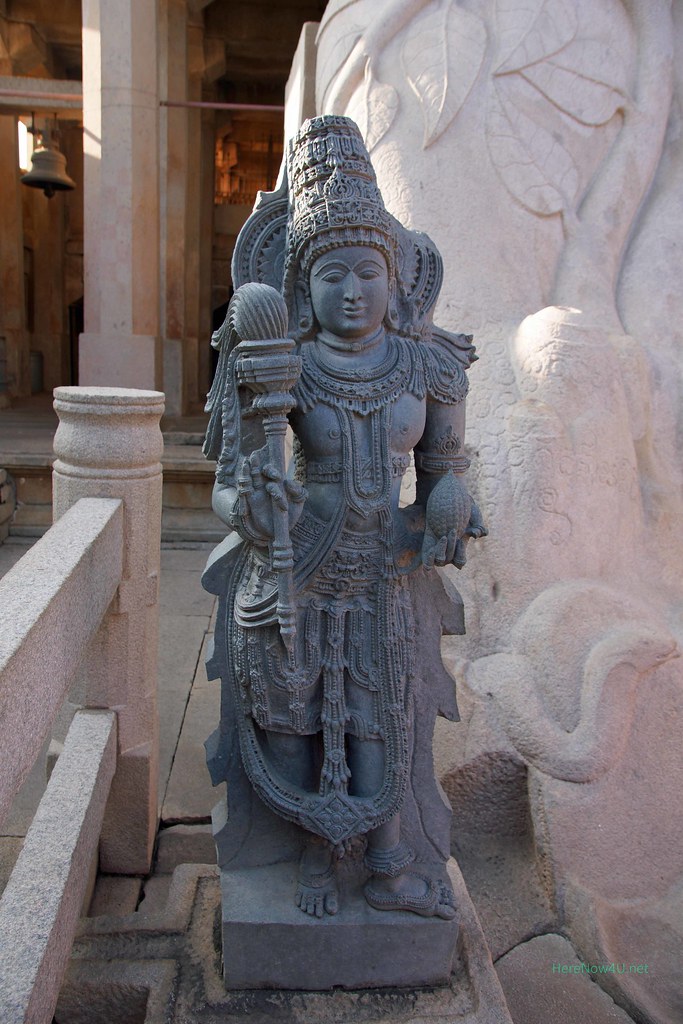
Yakshini, attendant at the feet of Gommateshvara
To approach personally a world famous work of art is something extraordinary and implies also an encounter with the grandeur it stands for. At the feet of Bahubali we clearly felt this. Especially the calm founded in equanimity and the timelessness radiated by the monolith is still present in our memory; it was like looking into the face of eternity. The square in front of it was rather empty when we arrived, only a few Pujaris were visible at its feet.
.
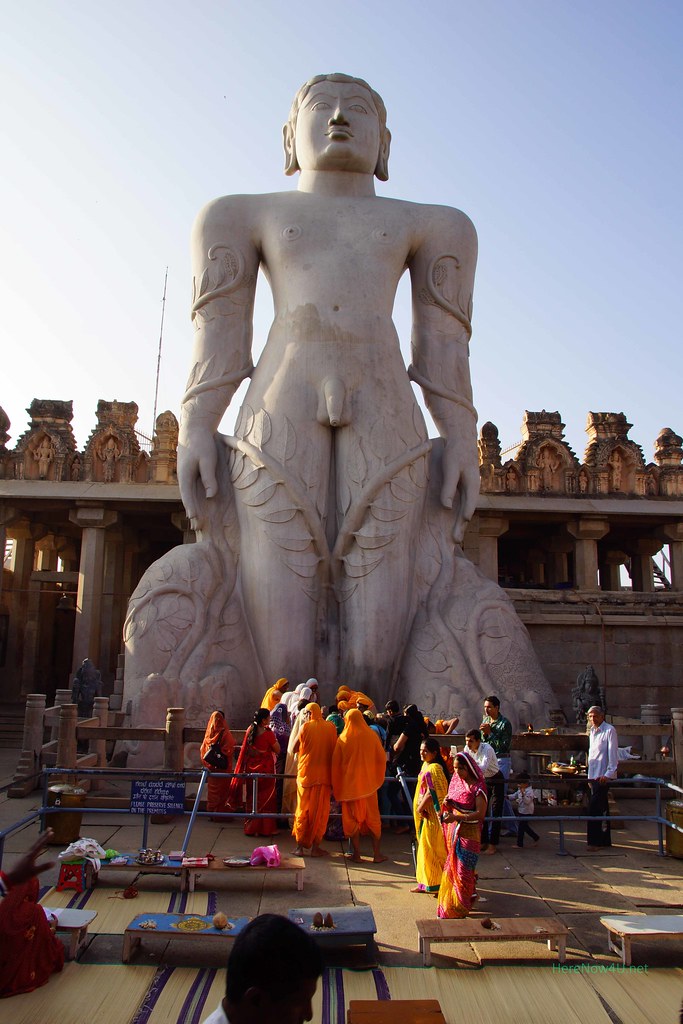
The statue of Bahubali in front of the temple entrance, the world famous monolith

Gradually more and more people gathered,…

…and the Pujaris were busily preparing a ceremony.
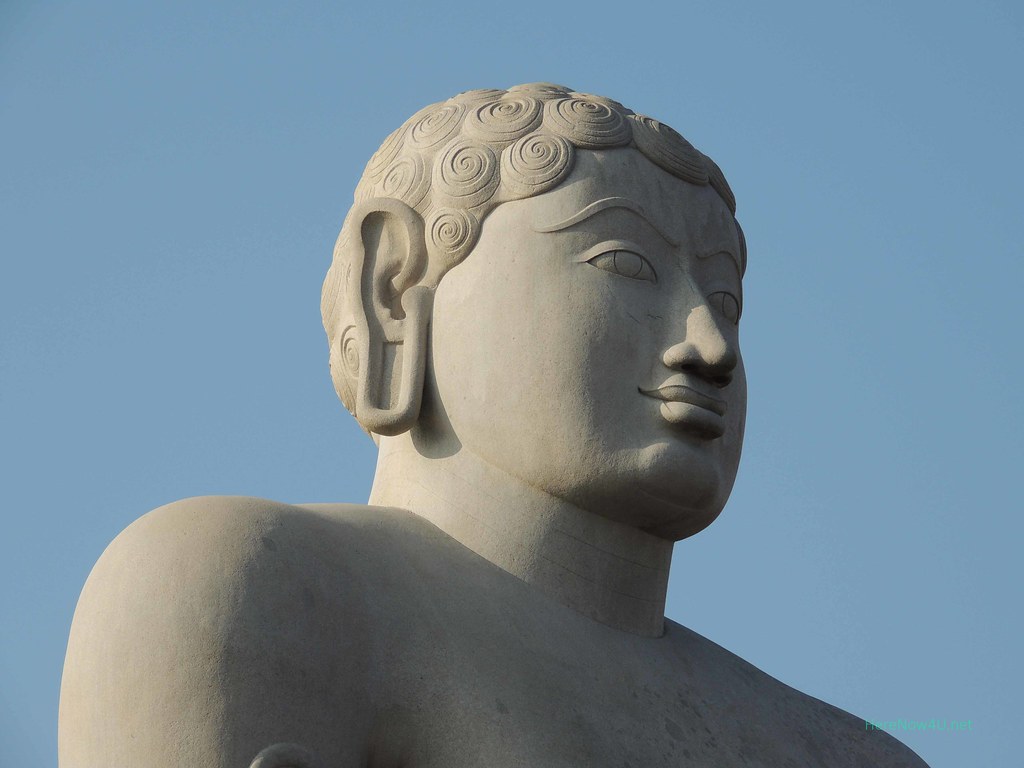
Since more than thousand years Bahubali is looking down from the top of Vindhyagiri Hill.
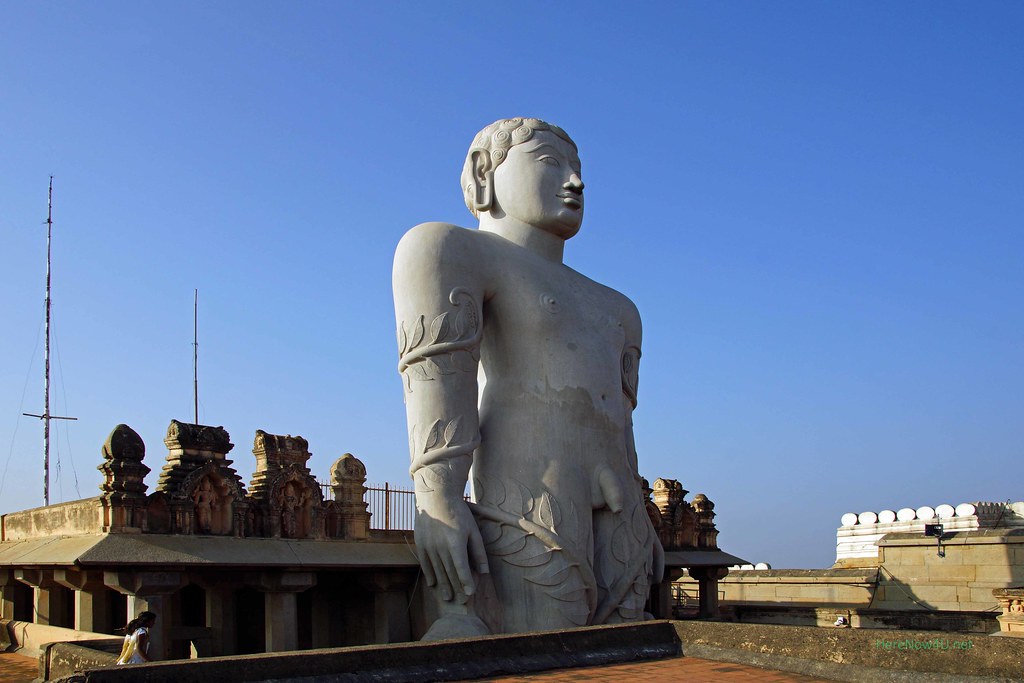
View from the upper store on the roof on Gommatheshvara
Fortunately our hosts were able to convince the temple guardians to grant access to us to the upper store, which is a part of the temple roof as well. From this position the view on the landscape and on the monolith are of a special beauty. For us, it was an opportunity for another special encounter. Surrounded by several people, two Jain monks were sitting side by side, talking as if familiar to each other. Which in fact they were, as one of them told me later. One was a Digambara, the other a Svetambara monk. The encounter of the two saints was accompanied by questions and comments of the audience. Everybody deeply enjoyed the situation. After the monks had exchanged thoughts the group disbanded.
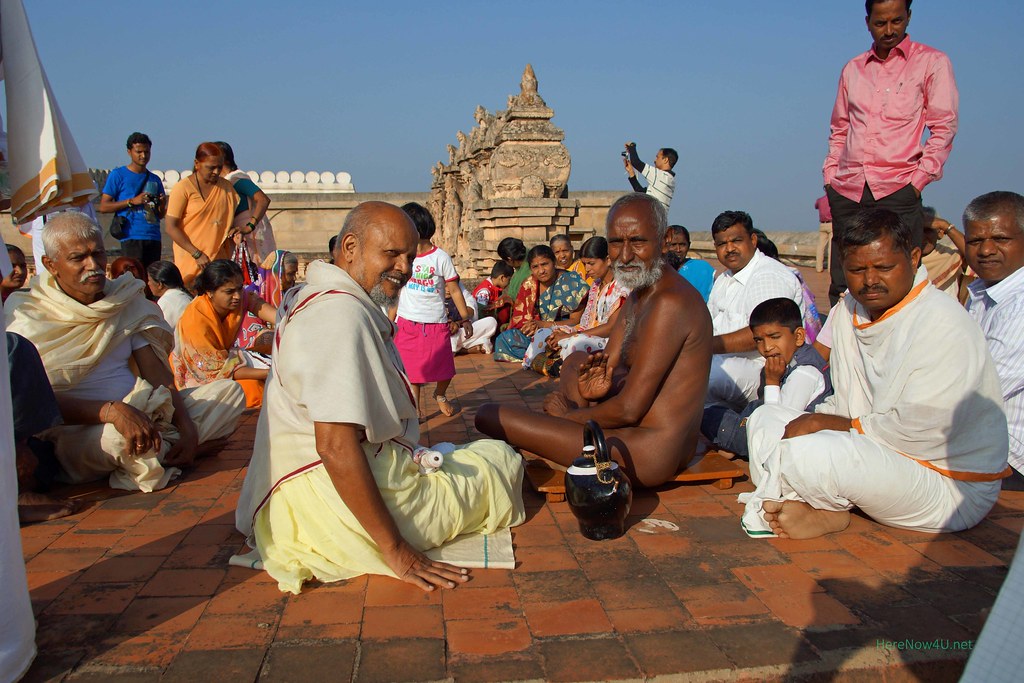
The monks turned and smilingly blessed us.
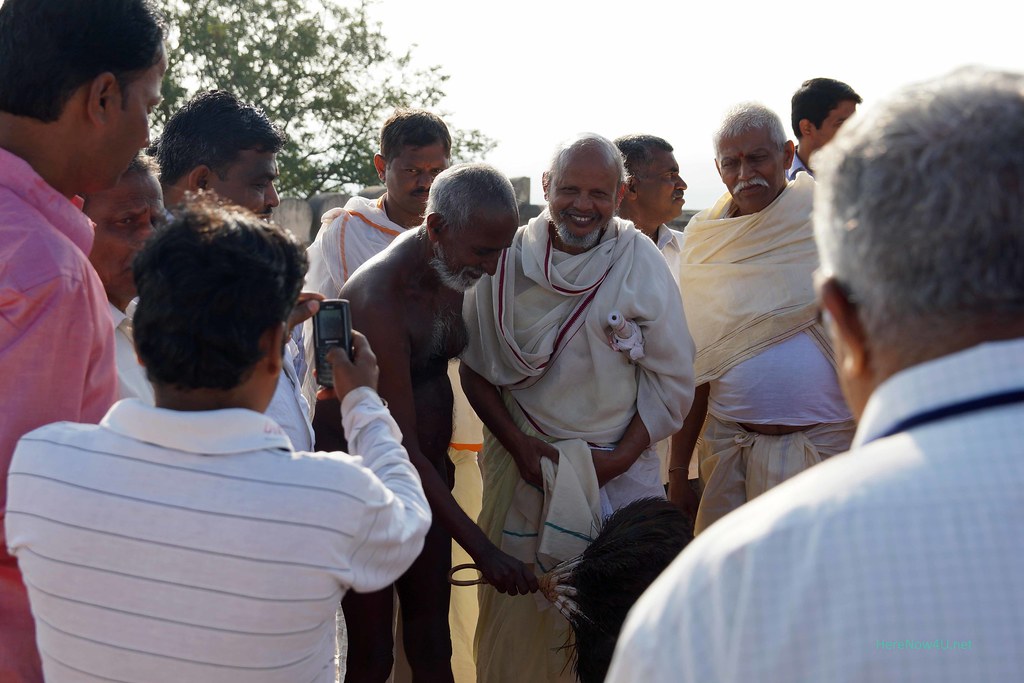
After having talked they gave the opportunity to take photos.
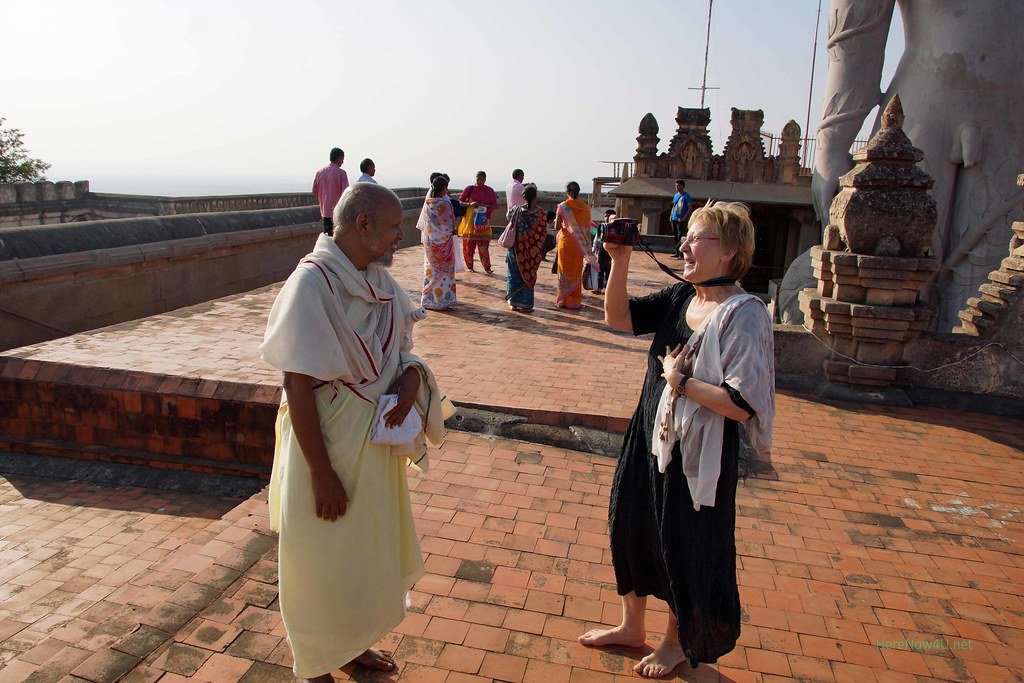
After some time there was an occasion for me to talk to one of the monks more in detail. Both of them had come all the way from Gujarat.
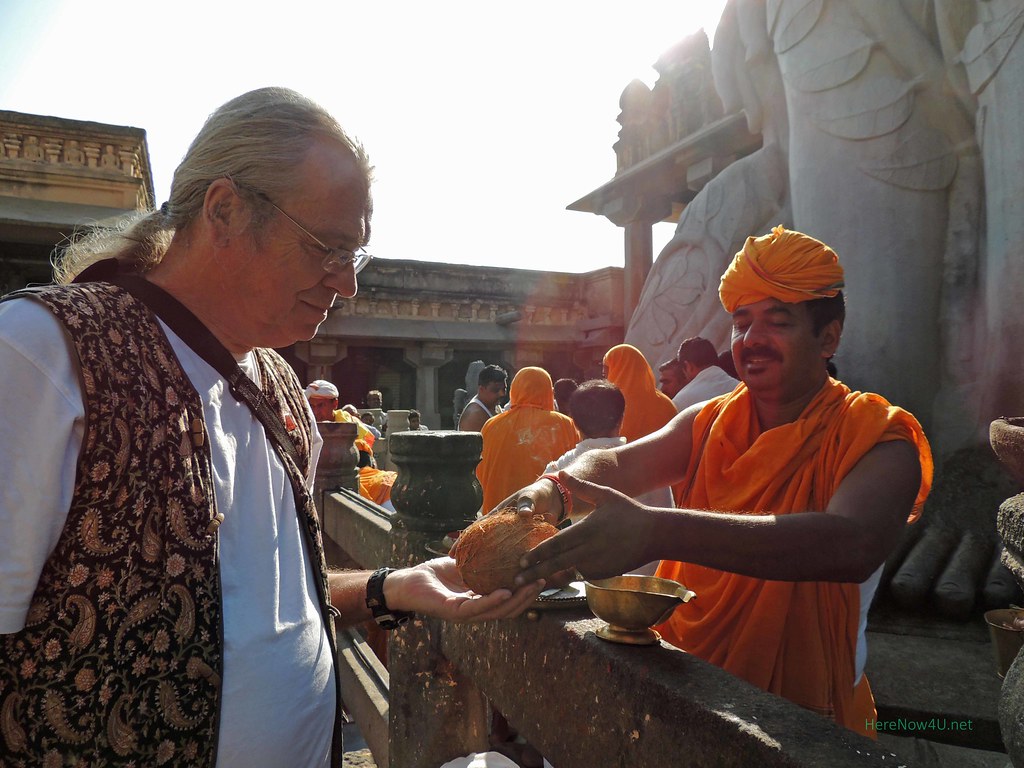
Blessings in front of the monolith
Back from the roof, the Puja was in full activity. The Pujari sprinkled the holy water on the heads of all approaching with a little donation and handed over a coconut marked with a red point of saffron paste to them. There was also lovely music and chants. Many clapped their hands and moved with the rhythm. It was a ceremony of pure delight to be admitted to sublimity so close.
 Editor Carla Geerdes
Editor Carla Geerdes
